Species
Ocean Fish processes over 30 different species of fish listed below. We supply fresh and IQF or plate frozen products in bulk or retail pack formats. Fish can be supplied as whole, gutted, de-scaled, as fillets, butterfly fillets, or any other format to customer specification.
The fish we supply
Arctic Char
(Salvelinus alpinus)
Description: Arctic char has many characteristics of Atlantic salmon and brown trout as it is closely related to both species. The fish is highly variable in colour, depending on the time of year and the environmental conditions of the lake where it lives. Individual fish can weigh 20 lb. (9.1 kg) or more. Generally, whole market-sized fish are between 2 and 5 lb. (0.91 and 2.27 kg). The flesh color can range from a bright red to a pale pink.
Habitat: It is found in lakes and rivers throughout the northern hemisphere.

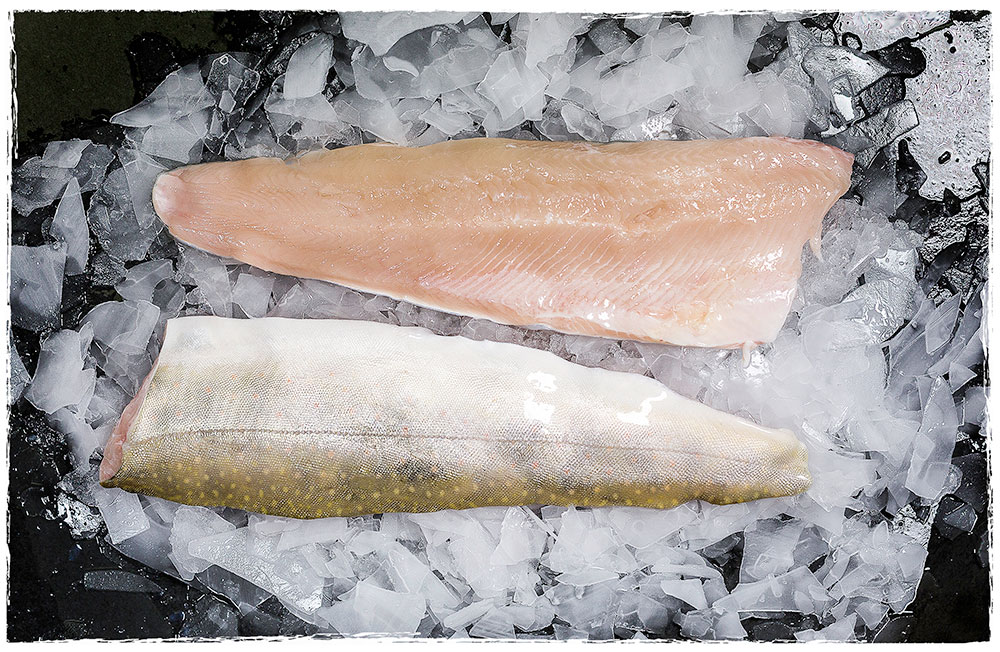
Brill
Brill, Scophthalmus rhombus, is a species of flatfish in the turbot family (Scophthalmidae) of the order Pleuronectiformes.
Description: Brill are left-eyed flat fish, have slender bodies, a long dorsal fin and a much shorter anal fin. Usually a light brown in colour with speckled black, white and grey spots all over the body. The mouth is relatively large in comparison to the size of the fish. The underside of the fish is usually cream coloured or pinkish white. Like other flatfish the brill has the ability to match its colour to the surroundings. Brill are on average between 40 cm to 75 cm in length and weigh over 3 kg.
They are sometimes confused with the Turbot (Psetta maxima), which is more diamond-shaped. The two species are related and can produce hybrids.
Habitat: Brill can be found in the North Atlantic, Baltic Sea, and Mediterranean, primarily in deeper offshore waters. Mature brill avoid very shallow waters and usually stay just offshore in water at least ten metres deep. They can also be found at depths of one hundred metres. Fully-grown brill may come into shallower water in spring to spawn. As a flatfish, brill prefer sandy or muddy ground, and can also be found living on shingle seabeds. In the UK, brill is mostly found in the south and west of the British Isles, although isolated numbers of this species can be found in many other places around the country.
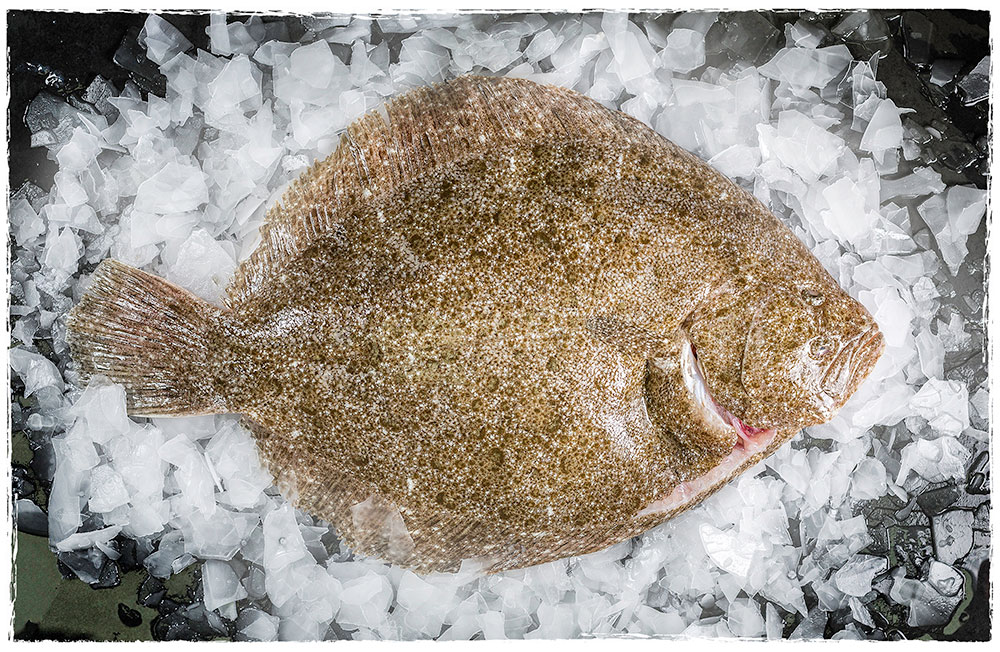
Cod
Description: Depending on their size, female cod can lay between 2.5 and 9 million eggs in a single spawning. Atlantic cod reproduce annually during the winter and early spring through external fertilization, with spawning taking place near the seafloor when temperatures are between 0-12°C and the water’s oxygen content is suitable. Sexual maturity is attained between ages 2 to 4, though some fish may not spawn until about 7 years of age.
Habitat: Stretches from Greenland to North Carolina; off the coast of Iceland; along the coasts of Europe from the Bay of Biscay to the Barents Sea. Found in temperate climates ranging from the shallows near the shore to deeper waters near the continental shelf.
Feed: They feed at dawn or dusk on a variety of invertebrates and fish. Historically, cod were top-tier predators in the northwest Atlantic, along with haddock, flounder, and hake, feeding upon smaller prey such as herring, capelin, shrimp, and snow crab.
About the name: The northeast Arctic or Arcto-Norwegian (Gadhus Morrhua) stock is at present the world’s largest population of Atlantic cod. This stock is sometimes referred to as skrei, a Norwegian name meaning something like “the wanderer”, distinguishing them from non-migrating coastal cod.

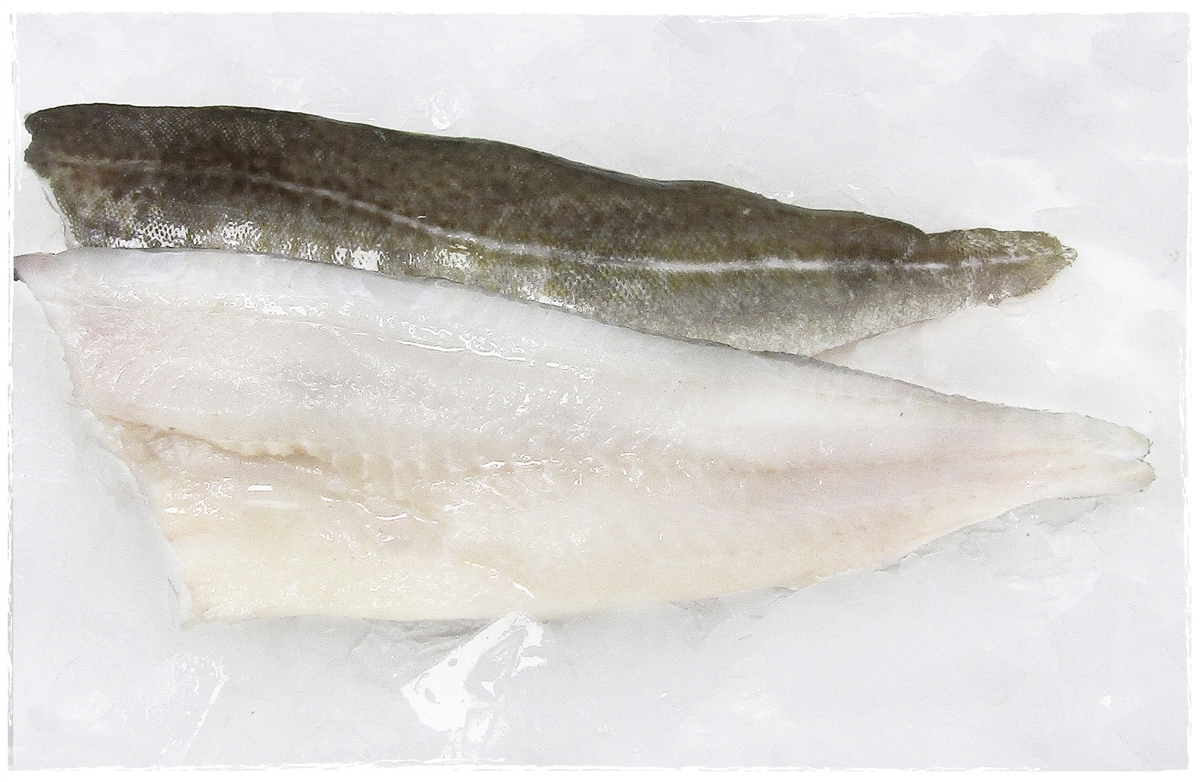
Coley
Pollachius virens
Description: Also known as the Boston blues, coalfish/coley and saithe in the UK. It can grow up to 130 centimeters (51 in) and weigh up to 32 kilograms (71 lb.)
Habitat: It is common in the northern parts of the Northern Atlantic including the British Waters and the Bay of Biscay and can be found close to the shore, particularly in rocky areas, but larger examples tend to be found around off-shore wrecks and reefs.
Feed: Coley feed mostly on other fish such as herring, sand eel and small mackerel as well as crustaceans and marine worms on the seabed.
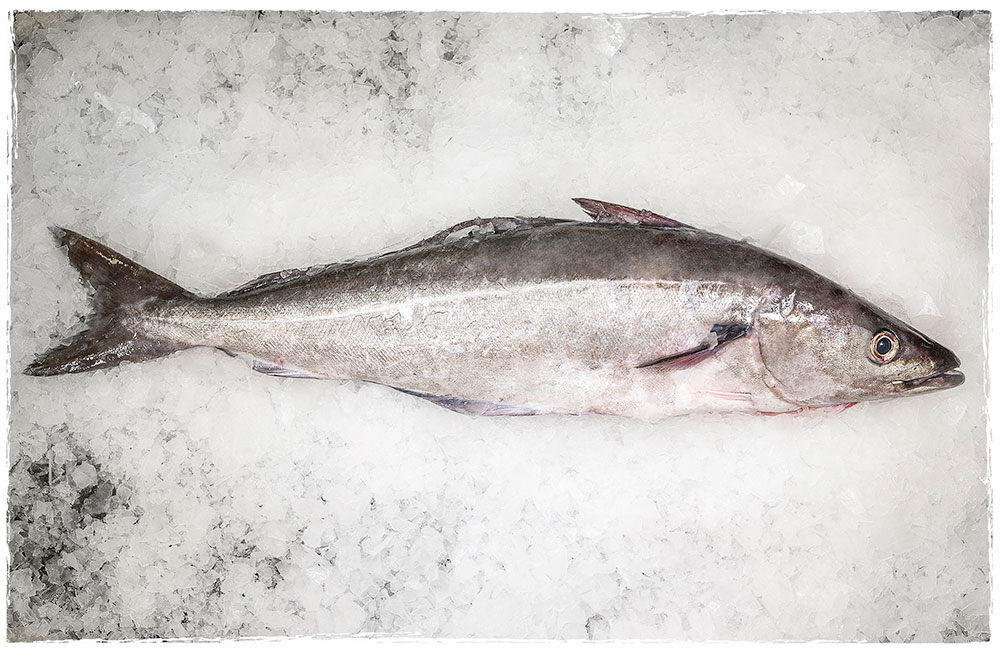
Cuttlefish
Marine animals of the order Sepiida, belonging to the class Cephalopoda (also including squid, octopodes, and nautiluses), Cuttlefish possess a unique internal shell, the cuttlebone. They are not fish but molluscs.
Description: Large W-shaped pupils, eight arms, and two tentacles furnished with denticulate suckers, with which they secure their prey. This is one of the largest and best-known cuttlefish species. It grows to 49 cm in mantle length (ML) and 4 kg in weight.
Habitat: The common cuttlefish is native to at least the Mediterranean Sea, North Sea, and Baltic Sea. It lives on sand and mud sea beds to a depth of around 200m. In the UK, the main catching areas are off the coasts of Cornwall, Devon, Dorset and Sussex.
Feed: Small molluscs, crabs, shrimp, fish, octopods, worms, and other cuttlefish.
Predators: Dolphins, sharks, fish, seals, seabirds, and other cuttlefish.
Life expectancy: About one to two years.
About the name: The Latin name for Ocean-Fish-supplied species is Sepia officinalis often called the common cuttlefish or European common cuttlefish.
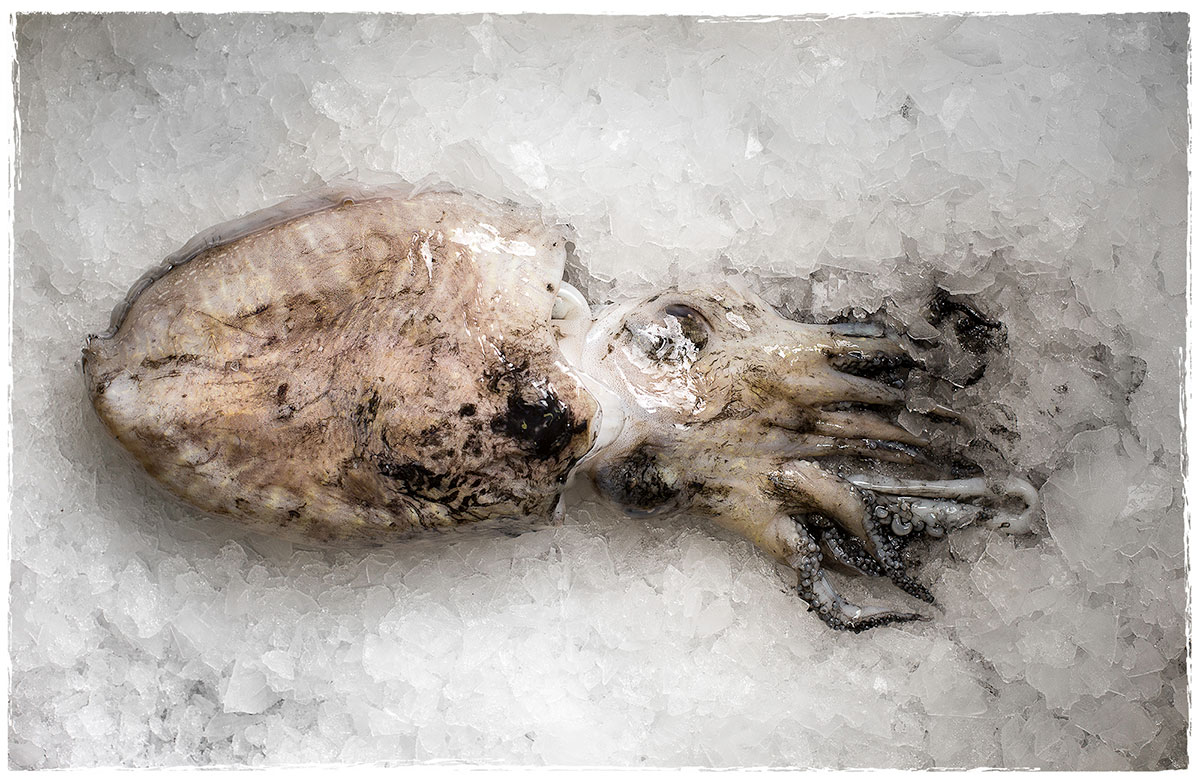
Dabs
Description: Dabs or the common dab (Limanda limanda) is a demersal flatfish of the family Pleuronectidae. In appearance dabs are similar to the plaice and the flounder, both its eyes normally on the right-hand side of its body. The upper surface is usually pale brown in colour with scattered darker blotches and speckles, but does not have the orange spots typical of a plaice. They are distinguished from flounder by their translucent body. It can reach 40 centimetres (16 in) in length and can weigh up to 1 kilogram (2.2 lb).
Habitat: It is found in shallow seas in the North East Atlantic and around Northern Europe, in particular the North Sea, (from Bay of Biscay to Iceland and the White Sea and includes the North Sea and the western part of the Baltic Sea, where it lives on sandy bottoms down to depths of about 100 metres (330 ft).
Feed: Like all flat fish, dabs are scavengers and feed from the seabed and on small marine creatures such as prawns and worms
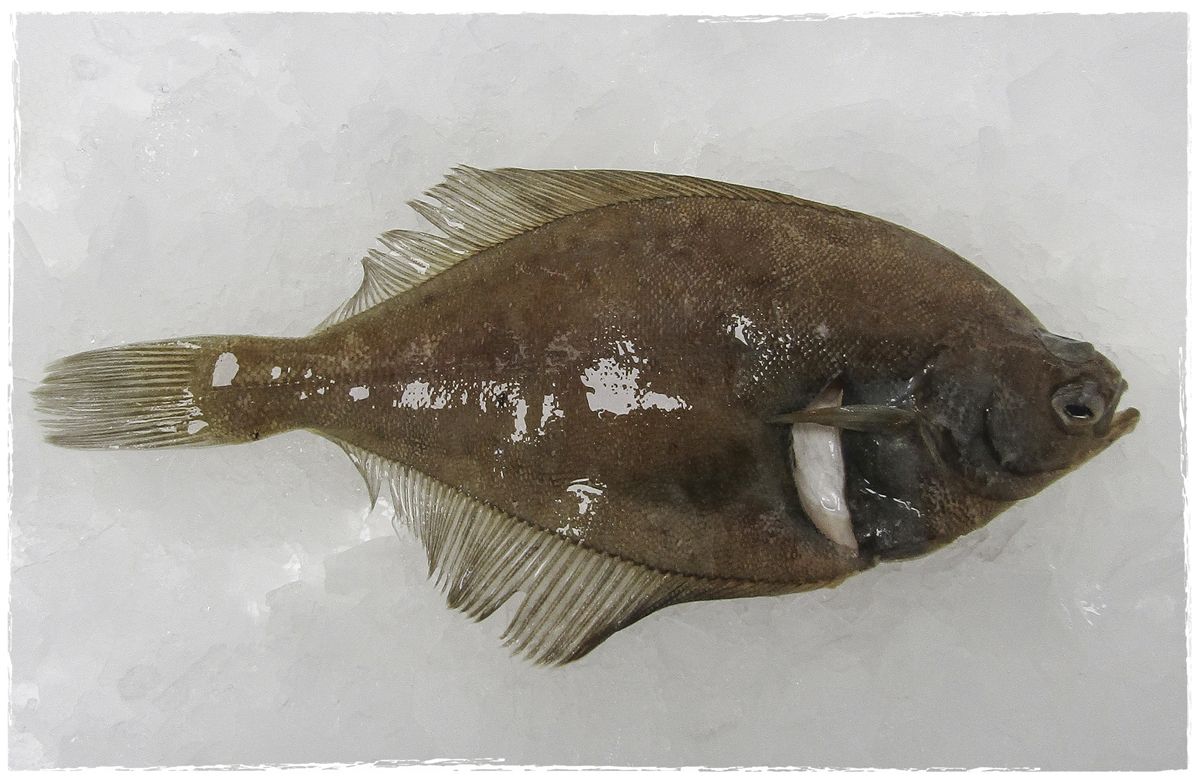
Dover Sole
There are over 180 species which are members of the Soleidae family of soles across the world, but only one species is featured on this page and which lives in the UK waters: Dover sole (Solea solea). Dover sole are also known as black sole and can be found in the northern Atlantic and the Mediterranean Sea.
Description: Oval body, the upper side is greyish-brown while the underside is white. It grows to a maximum length of about 70 cm (28 in). Similarly to other flat fish species, both Dover and Lemon sole begin life as larvae. At this stage they look similar to a round fish, one eye migrates to the other side of their head and they transform into flatfish as they develop.
Habitat: Tend to live in deeper water in the winter but come into shallower water to feed and spawn when the weather warms up in the spring and summer
Feed: Worms, shellfish, prawns, crab, mostly inactive through the day with tendency to feed at night.
About the name: It is suggested that the name Solea solea was given to this species in Roman times (Solea in Latin means sandal). The name Dover sole is said to come from the 1800s as a result of a big demand for this fish. A regular stagecoach service ran from the ports of Dover, where the fish was caught, to the capital to meet the demand. Common sole is officially the correct name of this species, but the name Dover sole has stuck, and is widely used.

Flounder
Platichthys flesus
Description: Also known as European flounder or fluke, flounder is a common flatfish species and can range in size up to 1ft 8ins and 6lb (UK shore caught typically 1-2lbs).
Habitat: Commonly found throughout UK and Irish waters, flounder live in shallow water often near to an influx of fresh water in clear sandy or muddy ground and can travel up rivers far into freshwater territory. Flounder is typically found in Northern European waters and the Mediterranean and Black Sea.
Feed: The fish feed on marine worms and prawns crustaceans and molluscs.
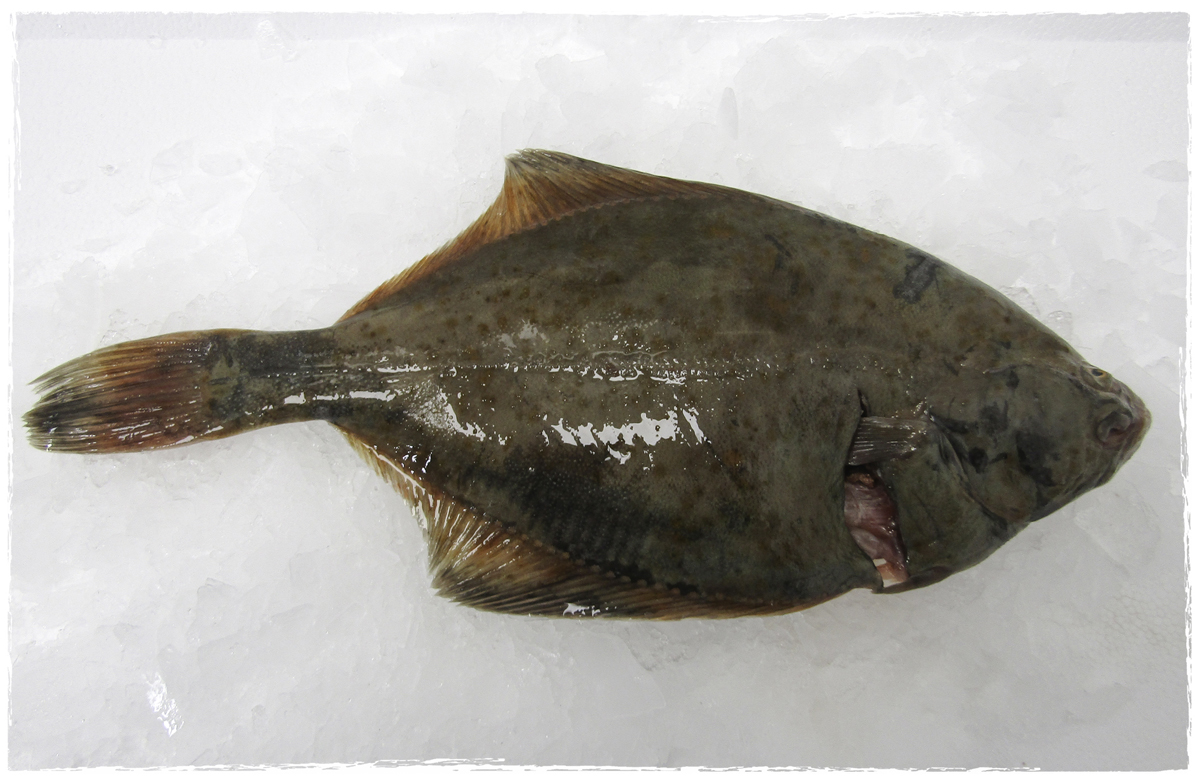
Grey Mullet
Description: Predominantly a European species, mullet are members of the Mugilidae family extending throughout the continental waters. There are three species of ‘true’ mullet commonly found in British waters: the thick-lipped grey, thin-lipped grey and the golden grey.
Habitat: Very common in the Mediterranean Sea, in the UK mullet can be found throughout most of the British Isles although more common in the south and west than in the north. They are also found in Icelandic waters and the Nordic waters around the Baltic Sea.
Feed: Often found in harbors, marinas, estuaries and sheltered natural coves and bays they feed primarily on organic matter which they take from the seabed but as scavengers will eat worms and small pieces of other animal matter which is found on the seabed. They also feed on seaweed and algae, and other forms of marine vegetation.
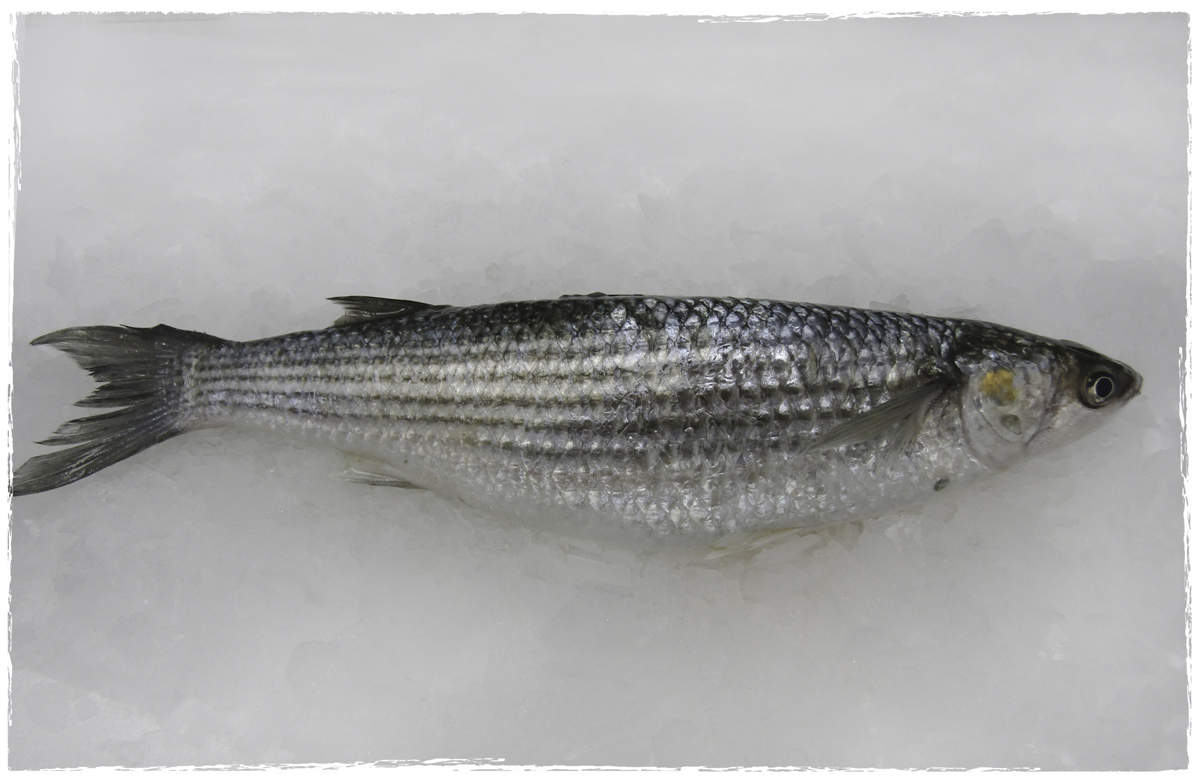
Haddock
Melanogrammus aeglefinus
Description: A black lateral line runs along its white side, a vivid dark ‘blotch’ above the pectoral fin is often described as a “thumbprint” or even the “Devil’s thumbprint” or “St. Peter’s mark”. Haddock range in size between 38 to 69 centimeters in length and 0.9 to 1.8 kilograms in weight. Spawning occurs between January and June, peaking during late March and early April.
Habitat: Found in the North Atlantic Ocean and associated seas. Most common depth of 40 to 133 m (131 to 436 ft), but has a range as deep as 300 m (980 ft). Thrives in temperatures of 2 to 10 °C (36 to 50 °F). Juveniles prefer shallower waters and larger adults deeper water. Generally, adult haddock do not engage in long migrations as do the younger fish, though seasonal movements have been known to occur across all ages.
Feed: Primarily on small invertebrates, although larger members of the species may occasionally consume fish.
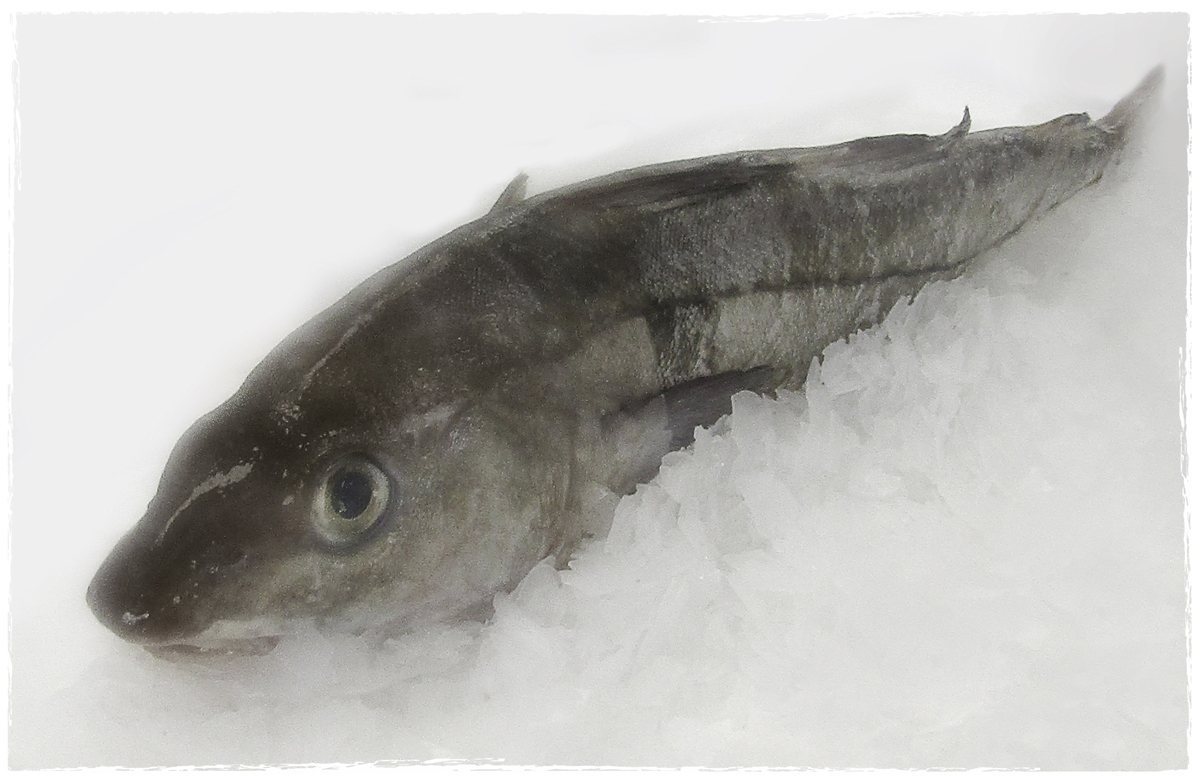
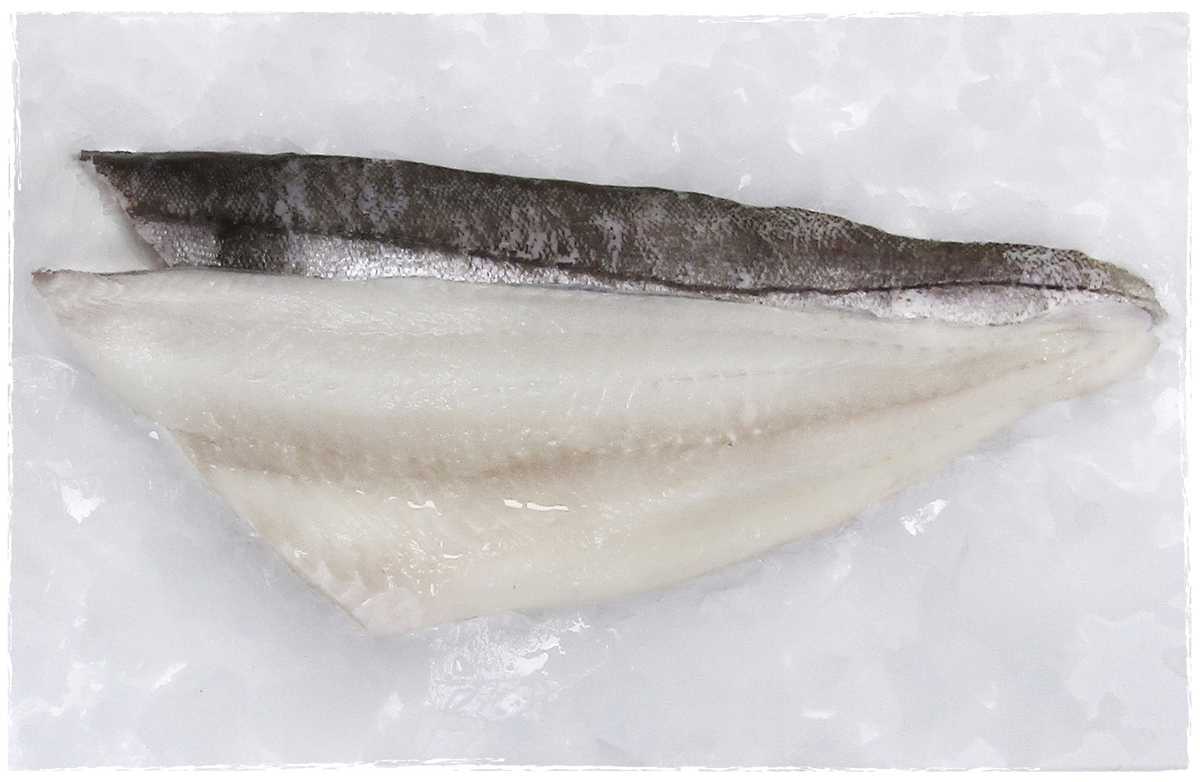
Hake
Hake is in the same taxonomic order (Gadiformes) as cod and haddock. A total of 12 hake species are known in the family Merlucciidae.
Description: A medium to large fish averaging from 1 to 8 pounds (0.45 to 3.63 kg) in weight, with specimens as large as 60 pounds (27 kg). The fish can grow up to 1 metre (3 ft 3 in) in length with a lifespan as long as 14 years. Male and female hake are very similar in appearance. After spawning, the hake eggs float on the surface of the sea where the larvae develop, at a later stage, the baby hake then migrate to the bottom of the sea, preferring depths of less than 200 metres (660 ft).
Habitat: The fish stay in deep sea water during the day and come to shallower depths during the night. European hake is found in the Mediterranean Sea, the North Sea, and the eastern Atlantic Ocean between Iceland and Mauritania. As a night predator during the day it stays on sandy or muddy abyssal plains, at depths usually between 30 and 400 m (98 and 1,312 ft), although it has been found at depths down to 1,000 m (3,300 ft).
Feed: An undiscerning predator, hake feed on their prey found near or on the bottom of the sea. The young feed on crustaceans, but as they grow, they start to feed on small and medium-sized fish and cephalopods. The adults show cannibalistic behaviour, eating smaller members of their own species.
About the name: The European hake (Merluccius merluccius) is sometimes also called the “herring hake”, perhaps because it often feeds on Atlantic herring, so is likely to be netted along with herring.

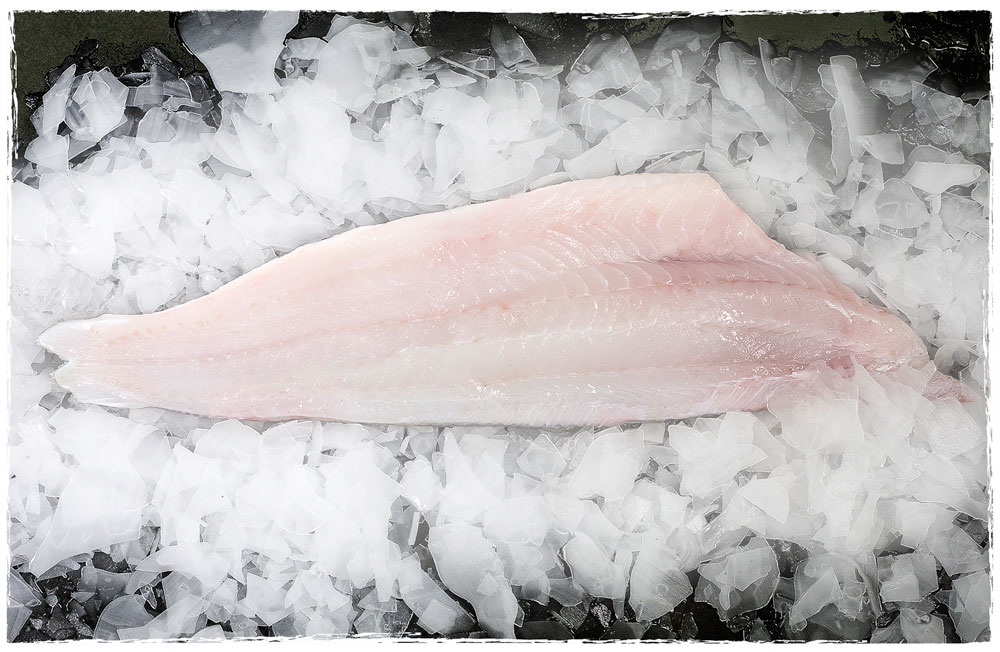
Herring
Clupea harengus
There are three species of Clupea which provide about 90% of all herrings captured in fisheries. Most abundant of all is the Atlantic herring, providing over half of all herring capture.
Description: Herring grow to a common length of 30cm and can live to a maximum of 22 years. Silvery-coloured fish with a soft single dorsal fin, without spines, no lateral line and have a protruding lower jaw.
Habitat: Often move in large schools around fishing banks and near the coast. The most abundant and commercially important species belong to the genus Clupea, found particularly in shallow, temperate waters of the North Pacific and the North Atlantic oceans, including the Baltic Sea, as well as off the west coast of South America. Fish called herring are also found in India, in the Arabian Sea, Indian Ocean and Bay of Bengal. As a pelagic species, herring swim at mid-water, at depths anywhere between a few meters below the surface and several hundred meters deep.
Feed: Plankton and minute sea creatures, but will also take very small sprats and fry of other fish.
Herring played a pivotal role in the history of marine fisheries in Europe, and early in the twentieth century their study was fundamental to the evolution of fisheries science. These oily fish also have a long history as an important food fish, and are often salted, smoked, or pickled.
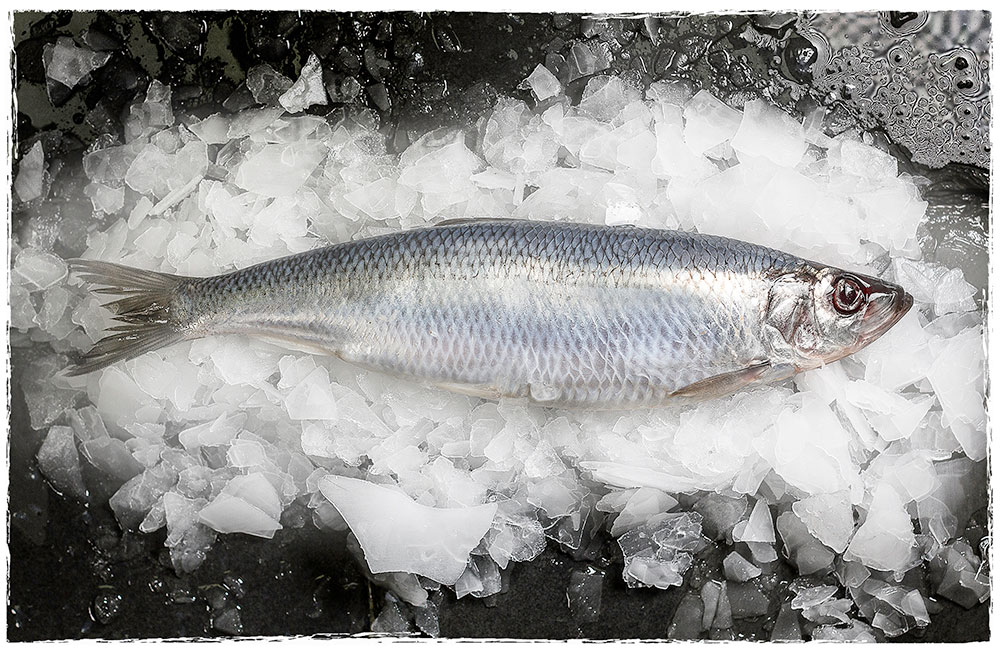
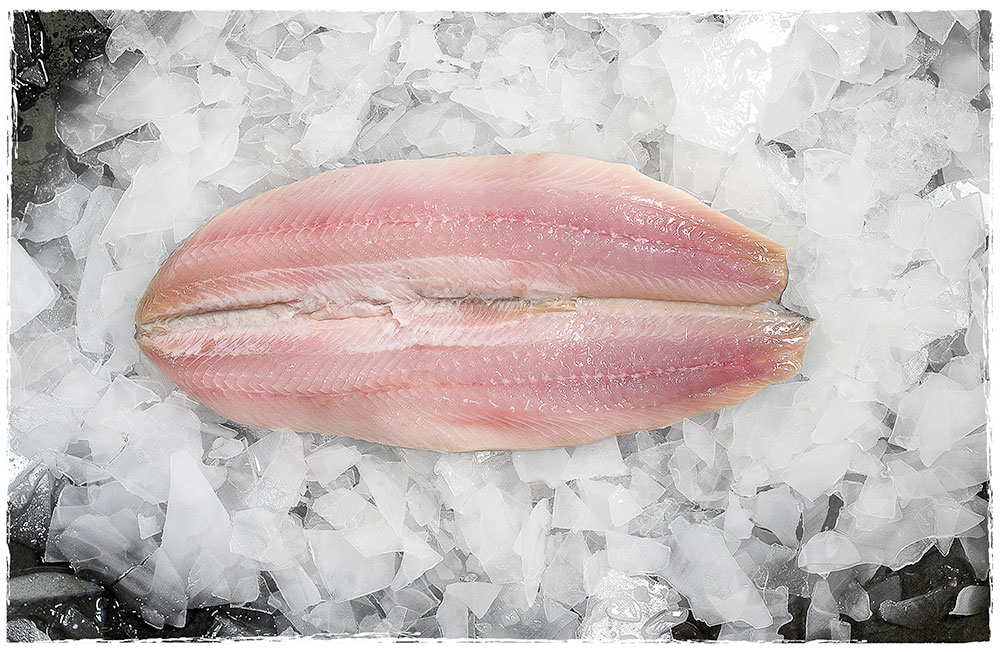
John Dory, St Pierre or Peter’s Fish,
Description: A coastal marine fish with a laterally compressed olive-yellow body, a large dark spot, and long spines on the dorsal fin. The dark spot at the side of it’s body is used to flash if danger approaches, confuses prey, which are scooped up in its big mouth. Large eyes at the front of the head provide it with binocular vision and depth perception, important for predators. Grows to a maximum size of 65 cm (2 ft) and 3 kg (7 lb) in weight. John Dory reproduce at 3 or 4 years of age around the end of winter. They are substrate scatterers, which means that they release sperm and eggs into the water to fertilize. Typical lifespan is about 12 years in the wild.
Feed: Primarily a piscivore; it eats a variety of fish, especially schooling fish such as sardines. Occasionally it eats squid and cuttlefish. It catches its prey by stalking it, extending its jaw forward in a tube like structure to suck the fish in with some water. The water then flows out through the gills.
Habitat: Coastal fish, found on the coasts of Africa, South East Asia, New Zealand, Australia, the coasts of Japan, and on the coasts of Europe. They live near the seabed in depths from 5 metres (15 ft) to 360 metres (1200 ft). They are normally solitary.
About the name: Fish of the genus Zeus, especially Zeus faber, of widespread distribution.
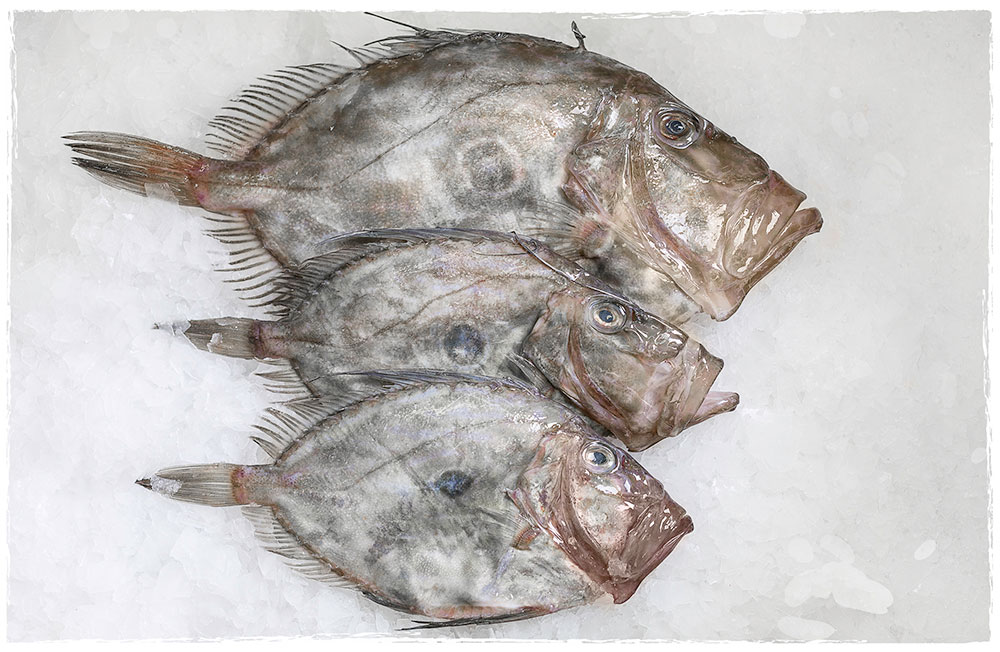

Lemon sole
The lemon sole (Microstomus kitt) is a flatfish of the family Pleuronectidae.
Description: It is a lighter yellowy color than the Dover sole, grows up to 65 centimetres (26 in) in length and reaches about 3 kilograms (6.6 lb) in weight.
Habitat: Native to shallow seas around Northern Europe, lives on stony bottoms down to depths of about 200 metres (660 ft). Found all around the British Isles, Scandinavian and Nordic waters, extending as far as the Barents Sea off the coast of Russia.
About the name: It is believed the name comes from it’s lemon-like shape. They do not taste of lemon! Lemon sole are a highly rated food. Despite being named lemon sole they are not actually that closely related to the Dover sole – hence the completely different scientific name as they belong to a different family and genus.
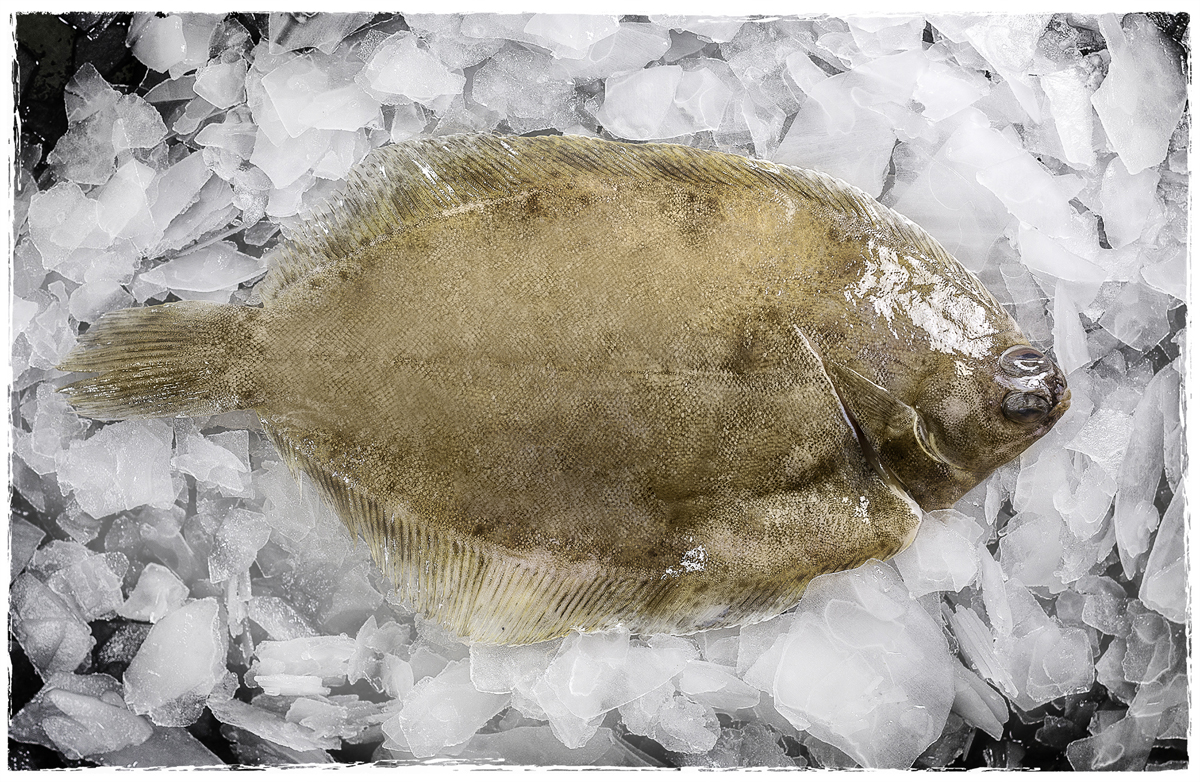

Ling
Description: Visual appearance is that of a cross between a cod and a conger eel. Long, eel-like body is usually brown to green on the back and pale on the underside with speckled flanks. First dorsal fin is short, usually with a dark spot. Second dorsal fin is the anal fin and is very long. Mouth is full of sharp teeth. The ling has a long slender body that can reach 2 metres in length. In adulthood, it is generally a deep-running fish, spending much of its life at depths of 100 m or more; younger fish are found at shallower depths.
Habitat: An ocean fish whose habitat is in the Atlantic and can be found around Iceland, Faroe Islands, British Isles, the Norse coast and occasionally around Newfoundland. Ling spawn in spring and are therefore less commonly caught at this time of year, but are caught fairly regularly throughout the rest of the year. Female ling will lay millions of eggs. Once hatched, the immature ling will live in shallower water for the first year or so. Later the small ling will head to offshore waters where they live for the rest of their life.
Feed: Ling feed primarily on fish, hunting any fish they can find i.e. herring, mackerel, cod, pouting and flatfish near the seabed. White fish make up the majority of the diet of a ling. They will occasionally eat crustaceans such as crab or lobster if this source of food is present.
About the name: The common ling or simply the ling, Molva molva, is a large member of a family of cod-like fishes.
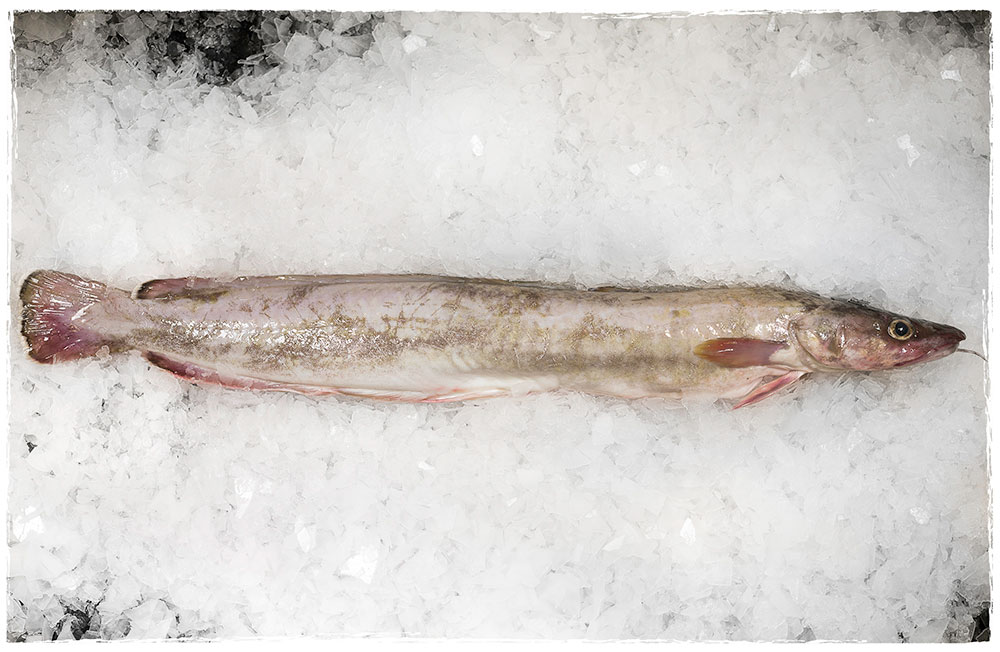
Mackerel
Description: Scientific name Scomber scombrus and also known as Atlantic Mackerel ranging in size up to 18ins and 6lb (UK shore caught typically around 1lb). Closely related to tuna, it is of a slim and streamlined small fish structure.
Habitat: Commonly found throughout the UK and Ireland in the summer months, it is a migratory shoal species coming to the UK in spring and early summer while migrating to warmer waters in the winter.
Feed: Mackerel is a fast moving predator and feeds on small fish and sandeels, hunting in mid to upper water.

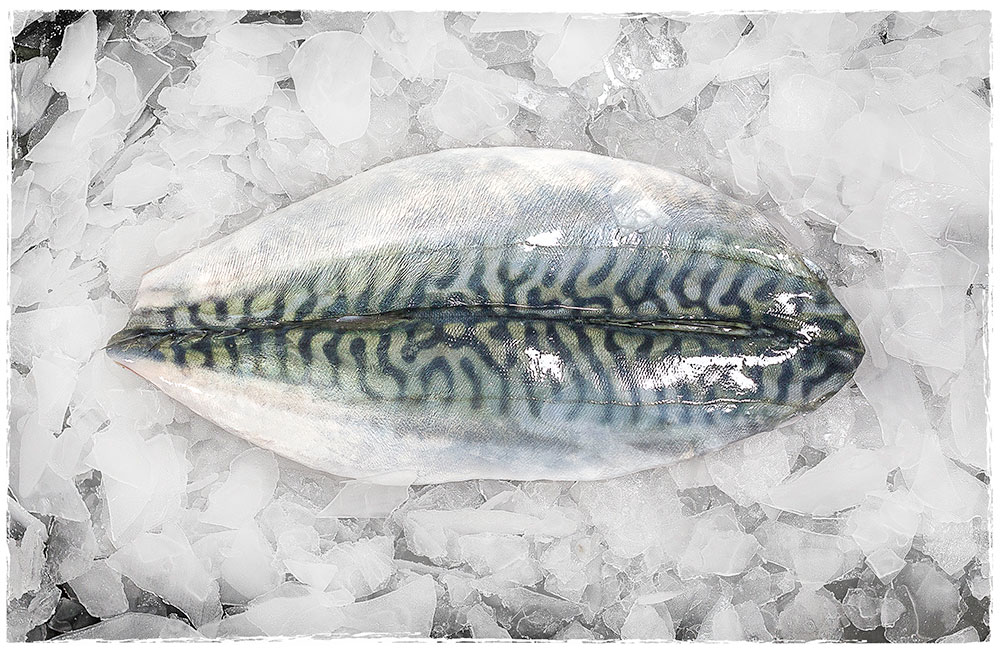
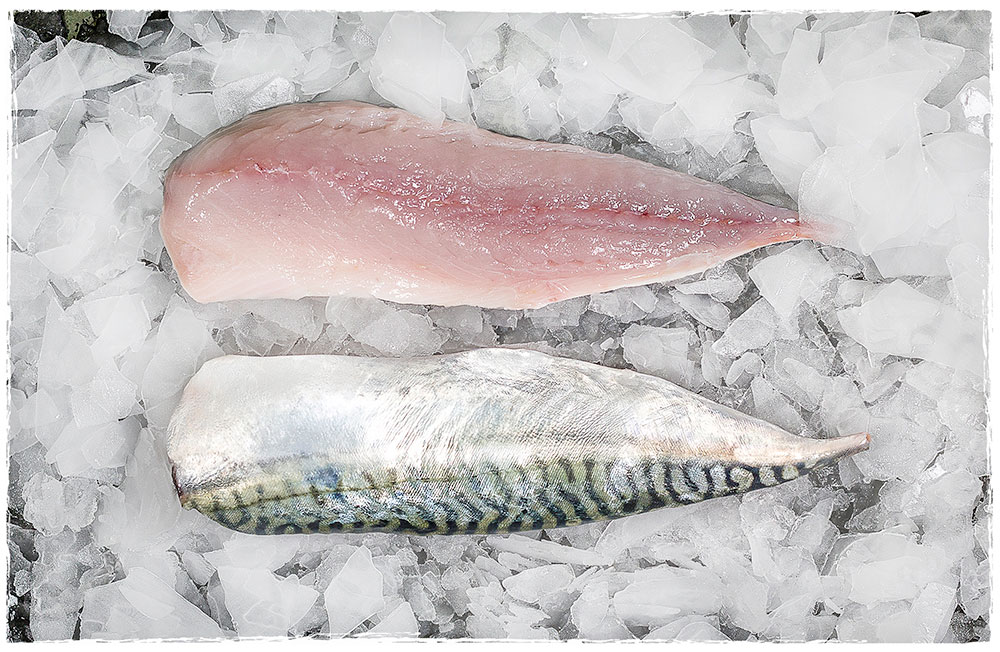
Megrim
Description: Megrim (Lepidorhombus whiffiagonis) is a species of left-eyed flatfish. It can grow up to 60cm in length and is found in depths between 100 and 700 m (330 and 2,300ft). The megrim has a slightly larger head and narrower body than is usual in flatfish with light brown coloration and dark spots across the body and dark grey fins.
Habitat: Found in the northeast Atlantic, Mediterranean Sea and Sea of the Hebrides as well as off the north coast of Africa.
Feed: Megrim prefer sandy or muddy sea floor and are predators feeding on small fish and squid but also consume crustaceans.
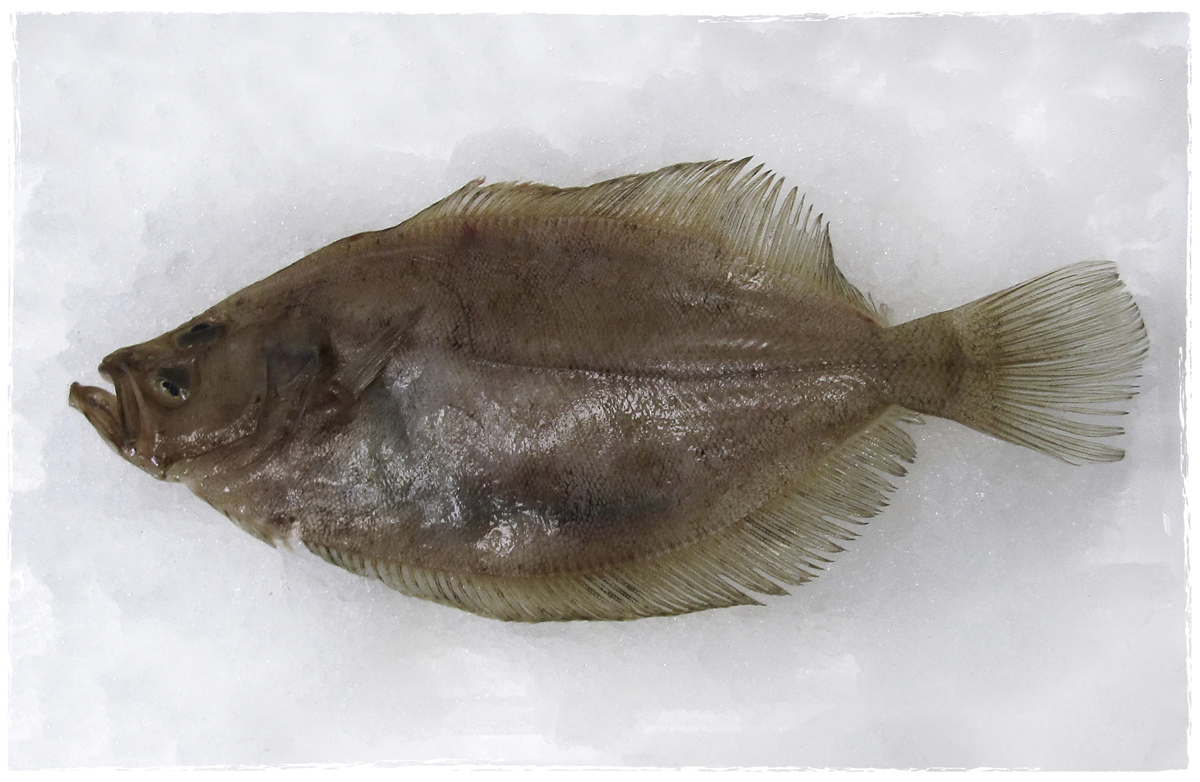
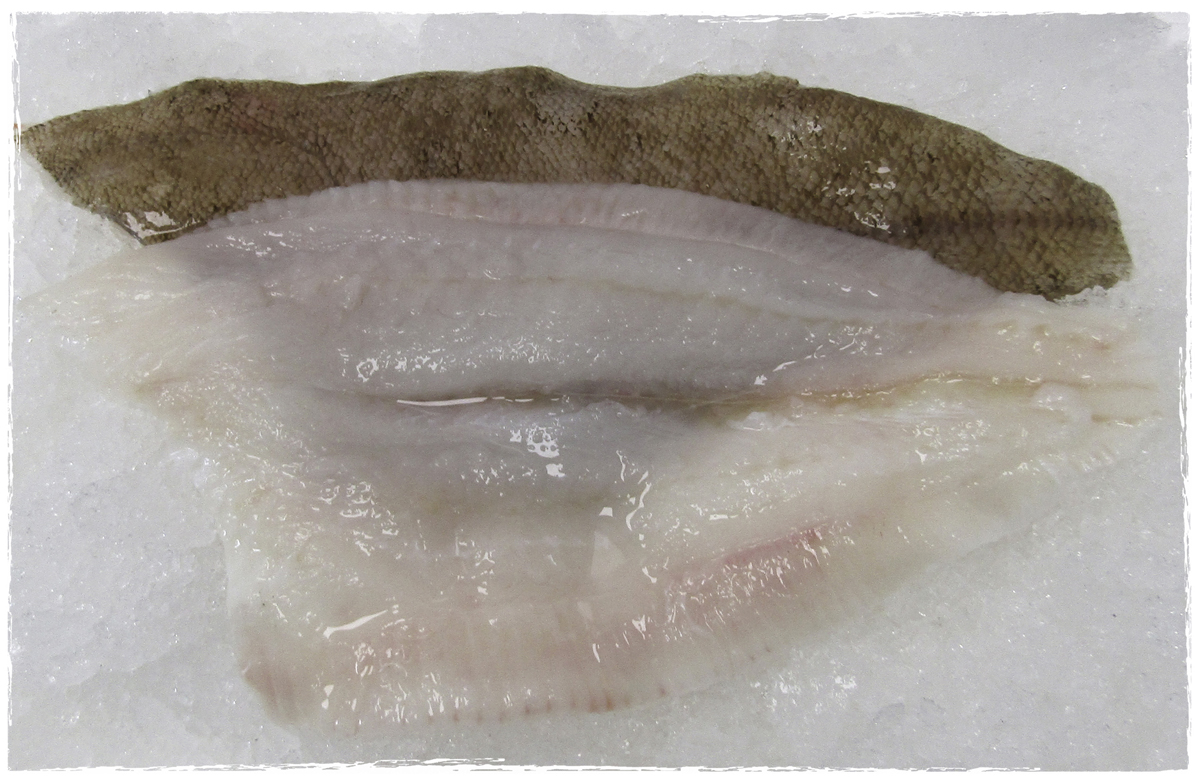
Monkfish
The Monkfish species Lophius piscatorius is a member of the genus Lophius.
Description: Massive mouth full of very sharp teeth which point inwards, can be up to 6ft long and weigh 250lbs, but are typically half this size.
Habitat: Well known to the fishermen off the coasts of Europe, a deep water fish which stays at depths of around fifty meters and substantially deeper than this. Monkfish are found in the north east Atlantic and parts of the Irish Sea, English Channel and North Sea.
Feed: Other fish, squid, octopus and crustaceans, pouting, sand eels, cod, pollock, coalfish, dogfish, all kinds of flatfish and even rays. They have also been caught with lobsters and crabs in their stomach, suggesting that monkfish are opportunistic predators that will eat pretty much anything that crosses their path.
About the name: Sometimes called the sea-devils, sometimes referred to also as the ‘poor man’s lobster’ for their exquisite flavour. The north European black bellied species is Lophius piscatorius while the Mediterranean species Lophius budegassa.
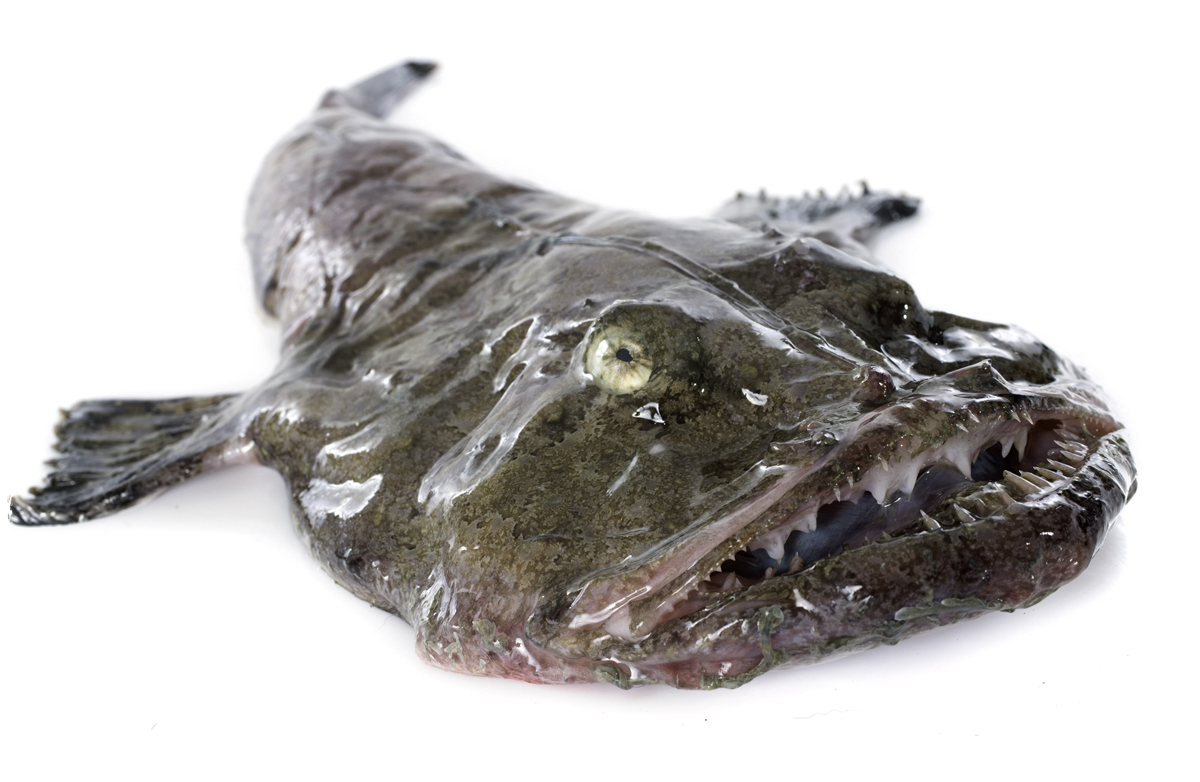
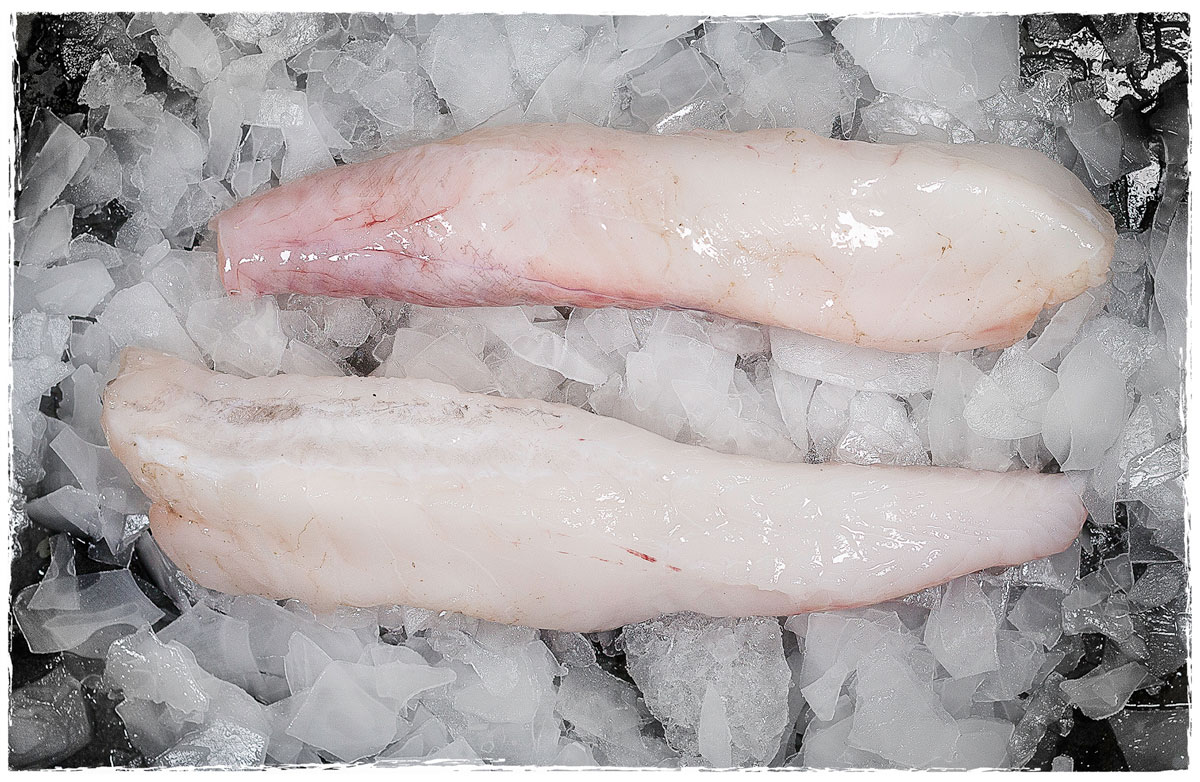
Mussels
Description: These groups have in common a shell whose outline is elongated and asymmetrical compared with other edible clams, which are often more or less rounded or oval. The external colour of the shell is often dark blue, blackish, or brown, while the interior is silvery and somewhat nacreous. Attached by strong (and somewhat elastic) thread-like structures called byssal threads, secreted by byssal glands (at foot of the mussel), blue mussels occasionally form clumps, or aggregates, of individuals when population density is low.
Habitat: Blue mussels are boreo-temperate invertebrates that live in intertidal areas attached to rocks and other hard substrates. Blue mussels are feed to predators, this is greatest during the 3 weeks mussels spend as a planktonic larva. During this stage it is susceptible to jellyfish and fish larvae through adults. Once it metamorphoses the mussel is still restricted by predation, with smaller mussels with thinner, weaker shells most affected. Once the shells becomes stronger, blue mussels are preyed upon by sea stars such as Asterias vulgaris as well as by several species of sea gulls.
Feed: As filter feeders they play a vital role in estuaries by removing bacteria and toxins.
About the name: Mussel is the common name used for members of several families of clams or bivalve molluscs, from saltwater and freshwater habitats. The blue mussel (Mytilus edulis), also known as the common mussel, is a medium-sized edible marine bivalve mollusc in the family Mytilidae. Blue mussels are subject to commercial use and intensive aquaculture. Mytilus edulis is commonly harvested for food throughout the world, from both wild and farmed sources.

Octopus
The octopus is a Cephalopod mollusc of the order Octopoda.
Description: Two eyes and four pairs of arms, it is bilaterally symmetric. It has a beak, with its mouth at the centre point of the arms. It has no internal or external skeleton (although some species have a vestigial remnant of a shell inside their mantles), allowing it to squeeze through tight places.
They have numerous defence mechanisms against predators; the expulsion of ink, the use of camouflage and deimatic displays, their ability to jet quickly through the water, and their ability to hide. The ink contains a substance that dulls a predator’s sense of smell, making the fleeting octopus harder to track. They trail their eight arms behind them as they swim. All octopuses are venomous, but only one group, the blue-ringed octopus, is known to be deadly to humans. There are app 300 recognised octopus species. Octopuses have three hearts. Two pump blood through each of the two gills, while the third pumps blood through the body. The ink contains a substance that dulls a predator’s sense of smell, making the fleeting octopus harder to track.
Habitat: Octopuses inhabit diverse regions of the ocean, including coral reefs, pelagic waters, and the ocean floor. The common octopus (Vulgaris) is typically found in tropical waters throughout the world, such as the Mediterranean Sea and East Atlantic. They prefer the floor of relatively shallow, rocky, coastal waters, often no deeper than 200 meters.
Feed: Crabs, crayfish, and bivalve molluscs, the octopus will eat almost anything it can catch. It hunts at dusk.

Plaice
Plaice is a common name used for a group of flatfish. There are four species in the group, the European, American, Alaskan, and scale-eye plaice.
About the name: Pleuronectus Platessa is the principal commercial flatfish in Europe and is also widely fished recreationally. The term plaice (plural plaice) is believed to have come from the 14th century Anglo-French plais which is thought to have come from the late Latin Platessa, meaning flatfish. The Latin word Platessa originated from the Ancient Greek platys, meaning broad.
Feed: Polychaetes, crustaceans and bivalves. Young plaice (between 1 and 2 years old) tend to consume mainly shrimps.
Description: Females mature, i.e. are able to spawn, at ages from 3 to 7 years. However, in the North Sea, most females mature at 3 years. Spawning being from December to May, each female releases eggs in batches every 3 to 5 days for around a month.
Habitat: Active at night, once transformed from larvae, the juveniles settle onto shallow intertidal beaches. The very youngest juveniles will, for a period of up to 7 months, strand themselves in very shallow intertidal pools before migrating to deeper waters. Some of these fish will return the next year, the majority of juveniles do not return after they have migrated during their first year.
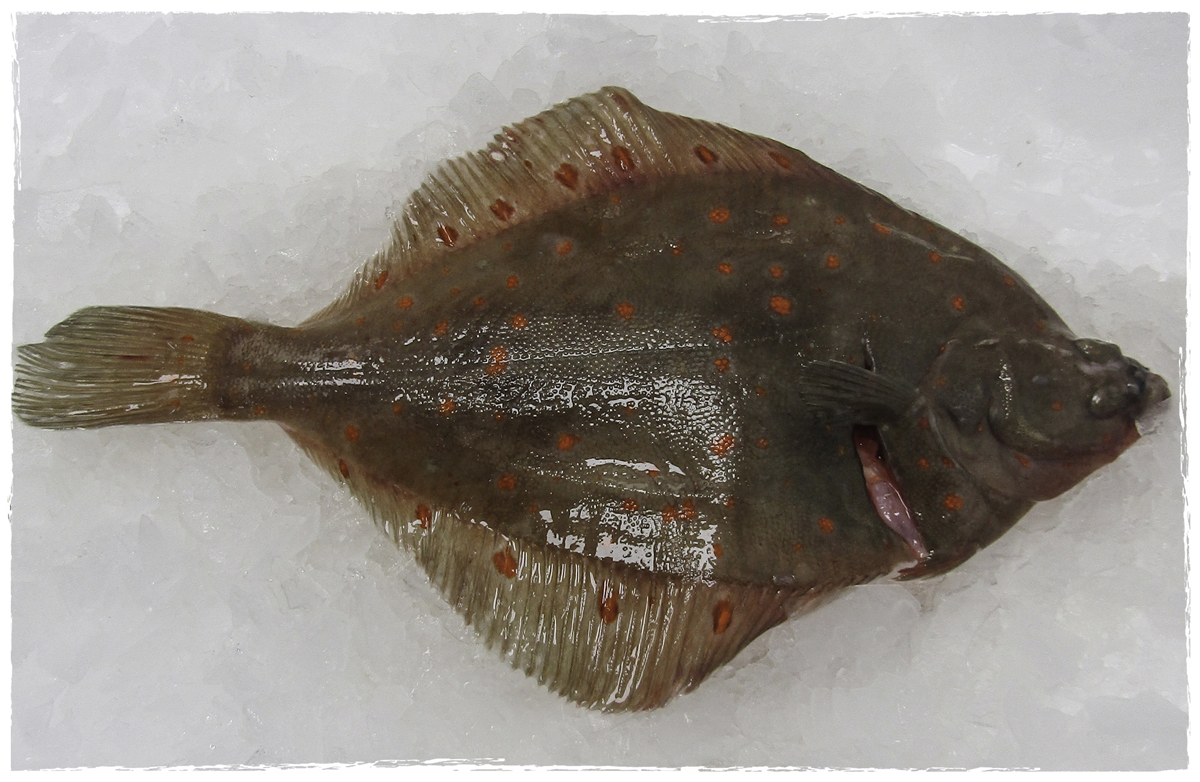
Pollock
Description: Adults can grow up to 130 centimetres (51 in) and weigh up to 18.1 kilograms (40 lb), although more commonly their maximum length is 75 centimetres (30 in). The Alaska Pollock and the Norwegian Pollock are also commonly referred to as pollock. While related (they are also members of the family Gadidae) to the above pollock species, they are not members of the genus Pollachius. Alaska pollock generally spawn in late winter and early spring in the southeastern Bering Sea. The Alaska pollock is a significant part of the commercial fishery in the Gulf of Alaska.
Habitat: Pollachius pollachius is common in the north-eastern parts of the Northern Atlantic, including the Bay of Biscay and North Sea. The maximum reported age is 15 years and they live near the sea floor.
About the name: Alternatively spelled Pollack. Common name used for North Atlantic marine fish species in the genus Pollachius.
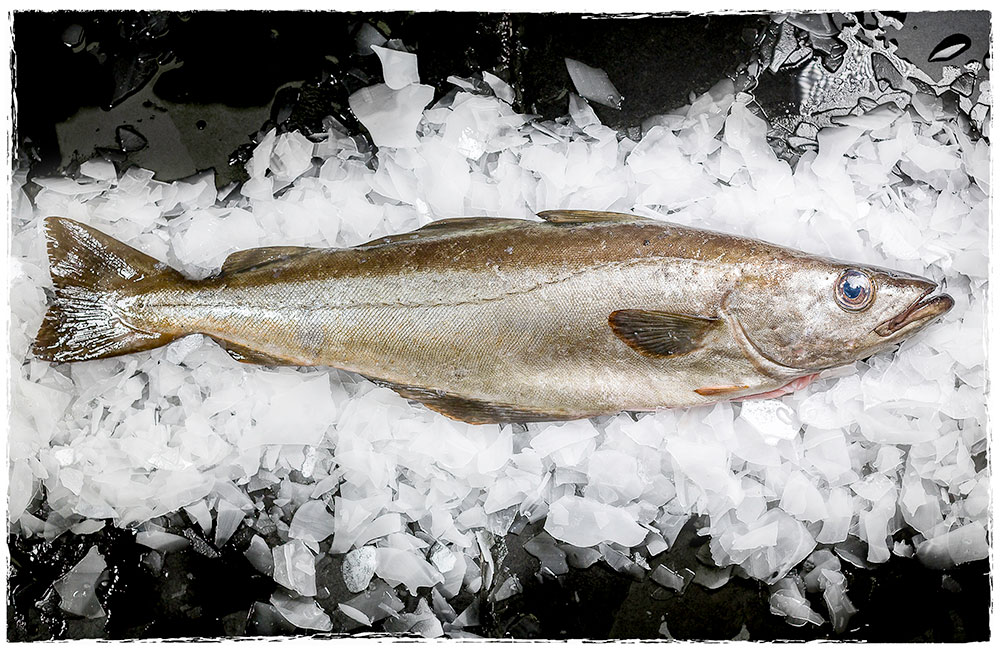
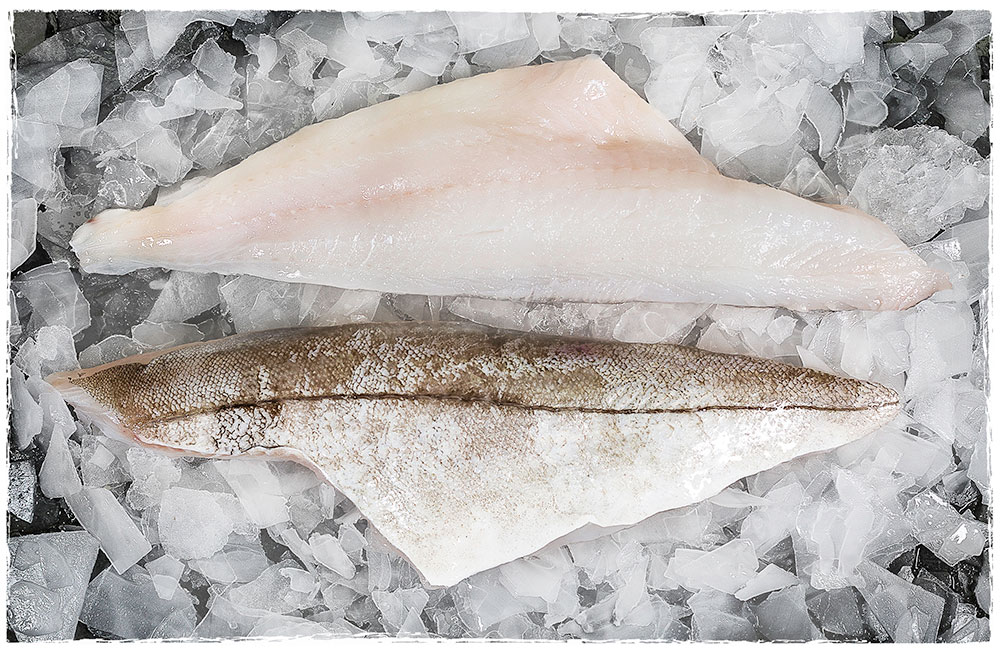
Pouting
Description: Pouting is a member of the cod family, scientific name: Trisopterus luscus, and is also known as: Pout, Bib, Whiting Pout, Blegg, Scotch Haddock. The species ranges in size of up to 2ft and over 5lb. typically 8oz-1lb.
Habitat: Found around most of the UK, they are more common in the south and south west of the British Isles. Pouting is a member of the cod family, smaller specimens living in shallower waters while the bigger specimens move offshore into deeper water.
Feed: Poutings are scavengers that will feed on marine worms, small fish, crabs and prawns.
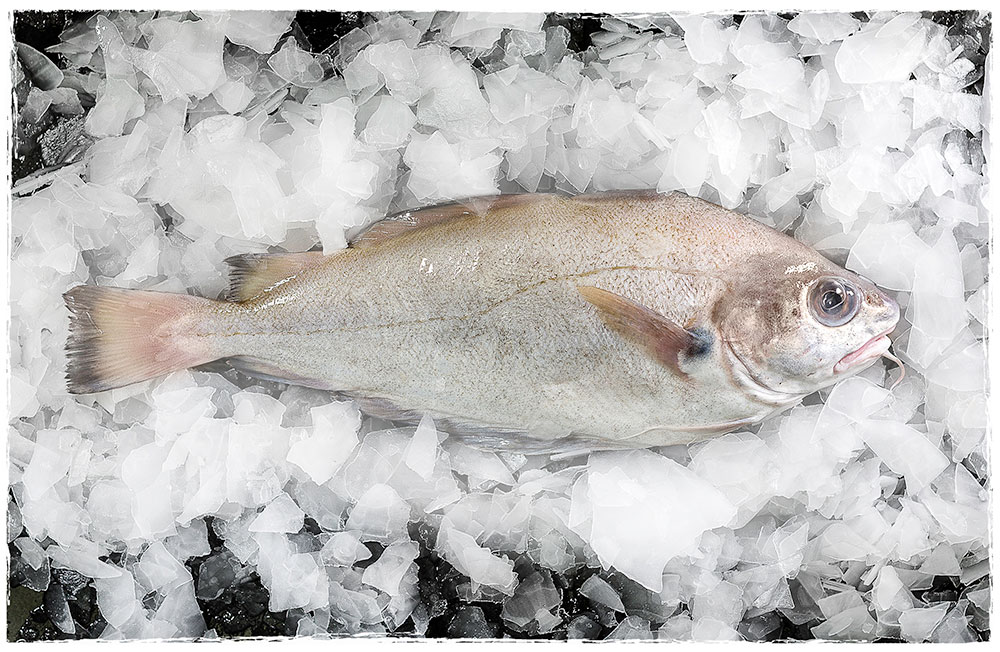
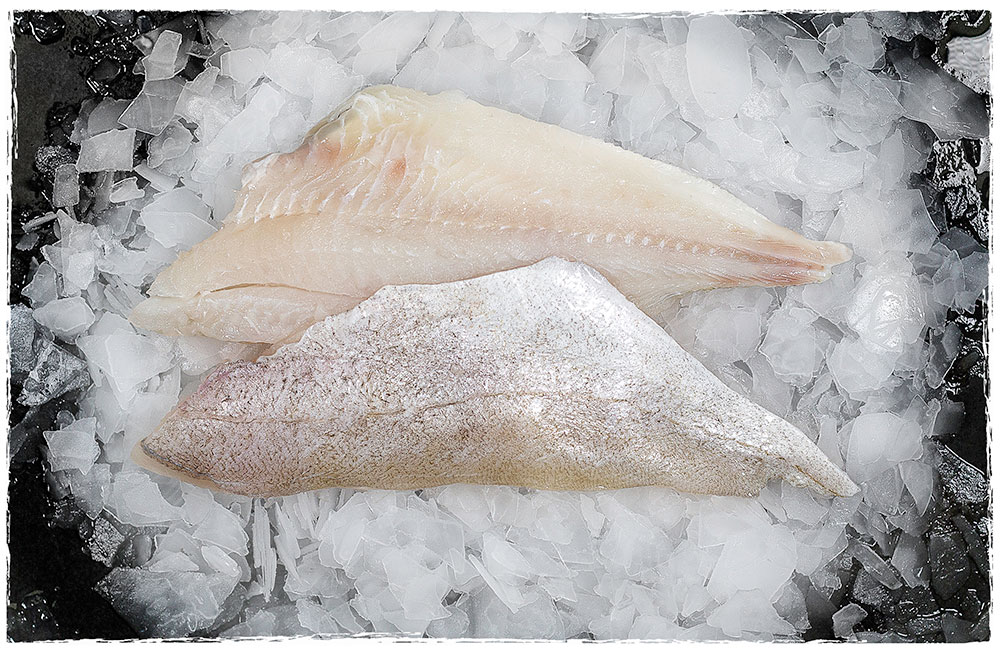
Red Mullet
Mullus surmuletus
Description: Also known as Striped Mullet or Goatfish due to the beard like head appearance, the red mullet varies in size up to 18ins and 4lbs. The red mullet is a member of the Mullidae family and is only distantly related to the grey mullet species.
Habitat: It is a warm water fish found throughout the Mediterranean and the Black Sea extending to the northern coast of Africa and the coasts of Spain, France and Portugal. It is found through the English Channel and the southern parts of the North Sea being more common around the south and west of the British Isles.
Feed: The red mullet is a demersal fish and as a fully mature fish prefers deeper water and is generally found over sandy, shingle and mixed seabeds, feeding on shellfish, crabs, small lobsters and will also eat marine worms.
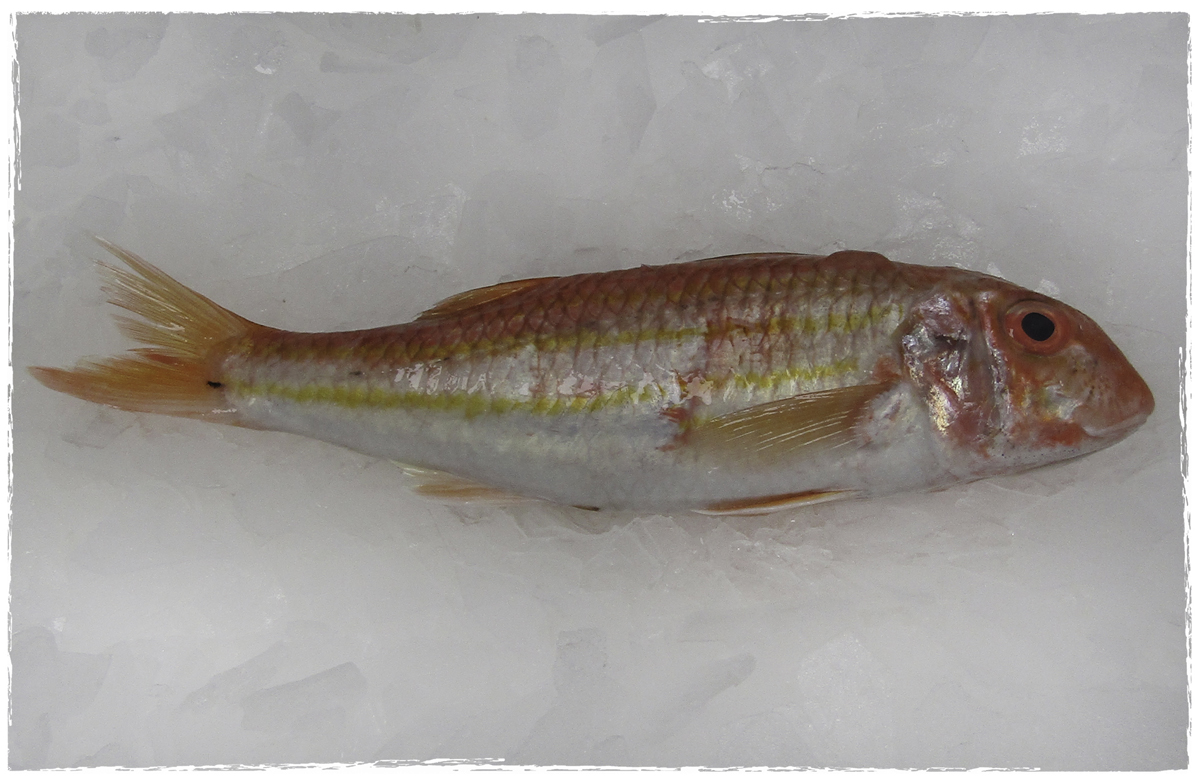
Red Snapper
Description: The Lutjanus campechanus species is commercially important and is also sought-after as a game fish. The body of a red snapper has a sloped profile, medium to large scales and a laterally compressed body. It has short, sharp, needle-like teeth, but lack the prominent upper canine teeth. The common adult length is 60 cm (24 in), but may reach 100 cm (39 in). The coloration of the northern red snapper is a dark pink-red, fading to pale underbelly, with more intense pigment on the back.
Habitat: It is found in the western Atlantic Ocean including the Gulf of Mexico, where it inhabits environments associated with reefs. The adult northern red snapper lives offshore on the continental shelf, over deep reefs, banks, and rocky bottoms.
Feed: Northern Red snapper are carnivorous while adults snappers are bottom-oriented predators. Juveniles commonly feed on zooplankton but as they mature, they switch over to larger prey including shrimp, squid, and octopus also feeding on a variety of smaller fishes, crustaceans, and mollusks, that they find in flat bottom areas near the reefs.
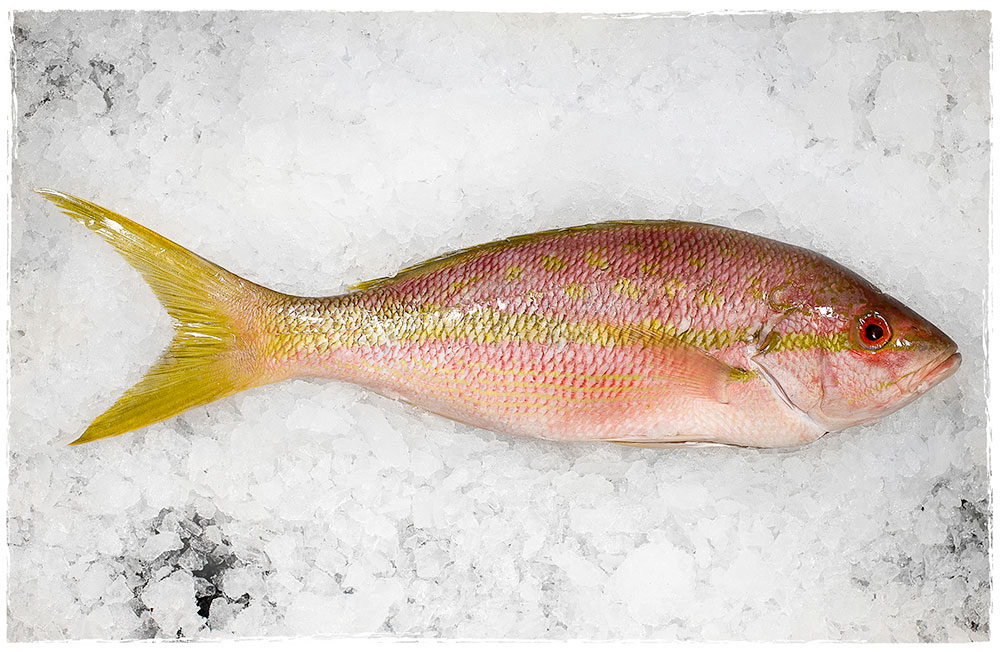
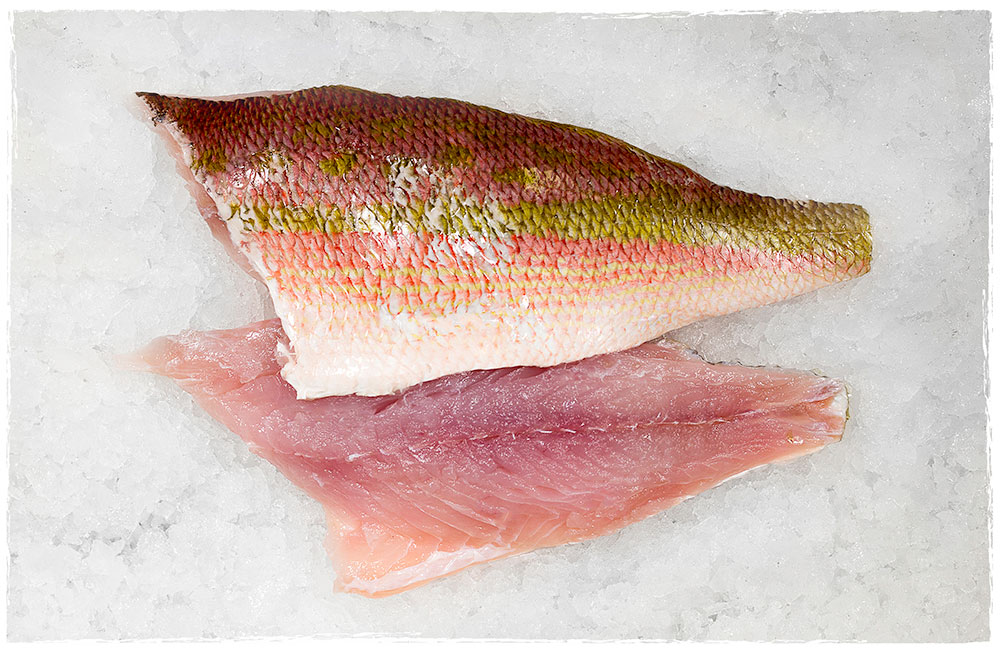
Sand sole
(Pegusa lascaris)
Description: The sand sole is a smallish species of right-sided flatfish which reaches a size up to 40cm and 3lbs.
Habitat: It is mostly found in various parts of the Atlantic and in the waters around the western Mediterranean sea and around the southern coast of the British Isles. It is also found along the west coast of Africa, as far as the waters of South Africa. Mostly found in shallow water from a few meters to around twenty or thirty meters, although in some areas they may be found as deep as several hundred metres it is thought to be able to live for up to ten years.
Feed: This species feeds on small marine creatures such as prawns and worms.
About the name: As implied by its name, the sand sole is found on sandy sea beds and over shingle and muddy sea beds as it only avoids rocky areas, burying itself in the seabed during daylight to avoid predators.

Sardines
Description: It is a small or moderate herring-like fish with a green or olive coloured back, shading to silvery white, usually 15-20 cm in size.
Habitat: A coastal pelagic fish, at 25-55 m by day and 15-35 m by night. Reproduction takes place at 20-25 m, near the shore or as much as 100 km out to sea, from April (English Channel), June to August (North Sea, also Black Sea), September to May (off European coasts of Mediterranean), and November to June (off African coasts of Mediterranean). A shoaling and migratory species.
Feed: Planktonic crustaceans but also on larger planktonic animals.
About the name: Sardina pilchardus within the herring family of Clupeidae. Also commonly known as pilchards, the name sardine was first used in English during the early 15th century, may have come from the Mediterranean island of Sardinia where sardines were once abundant.
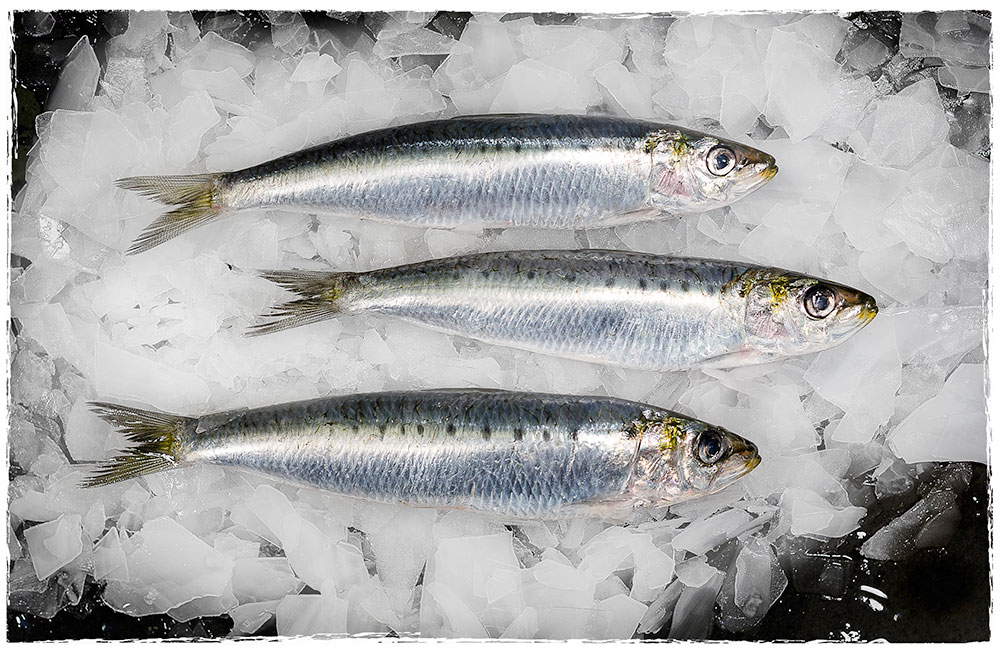

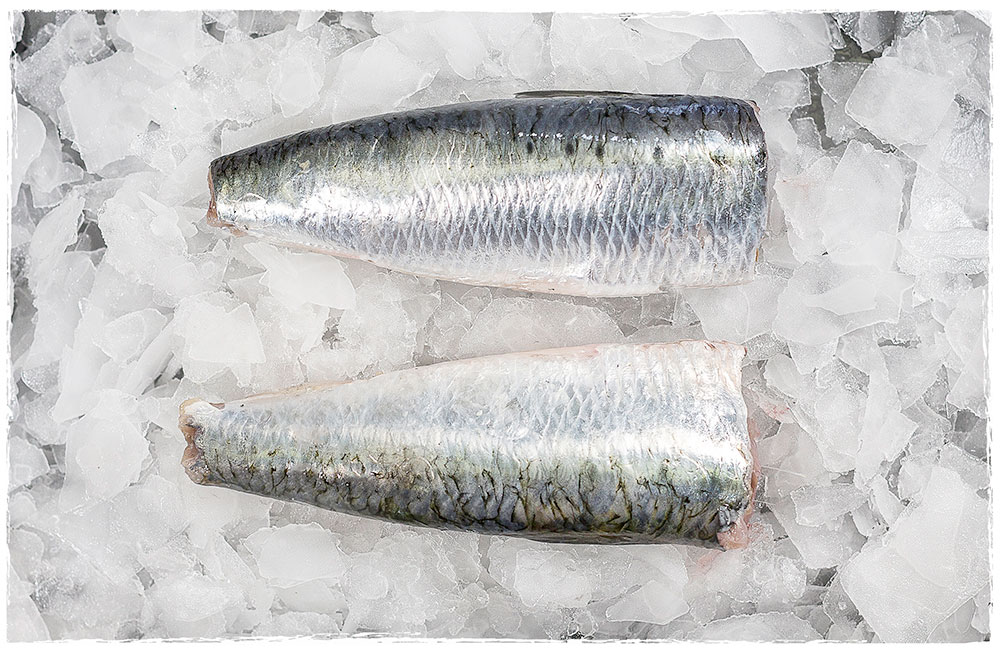
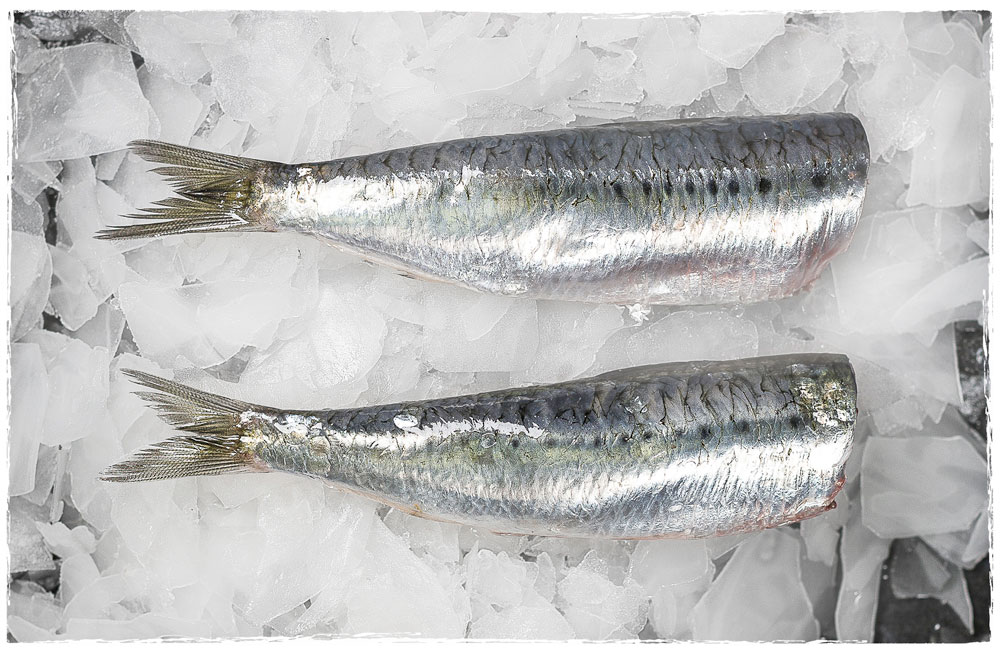
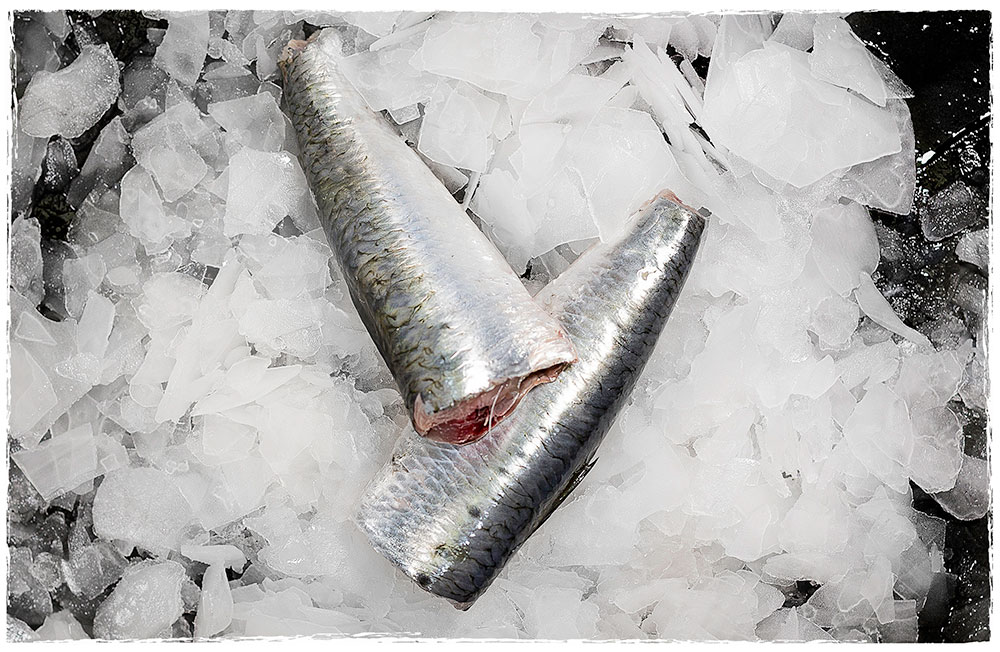
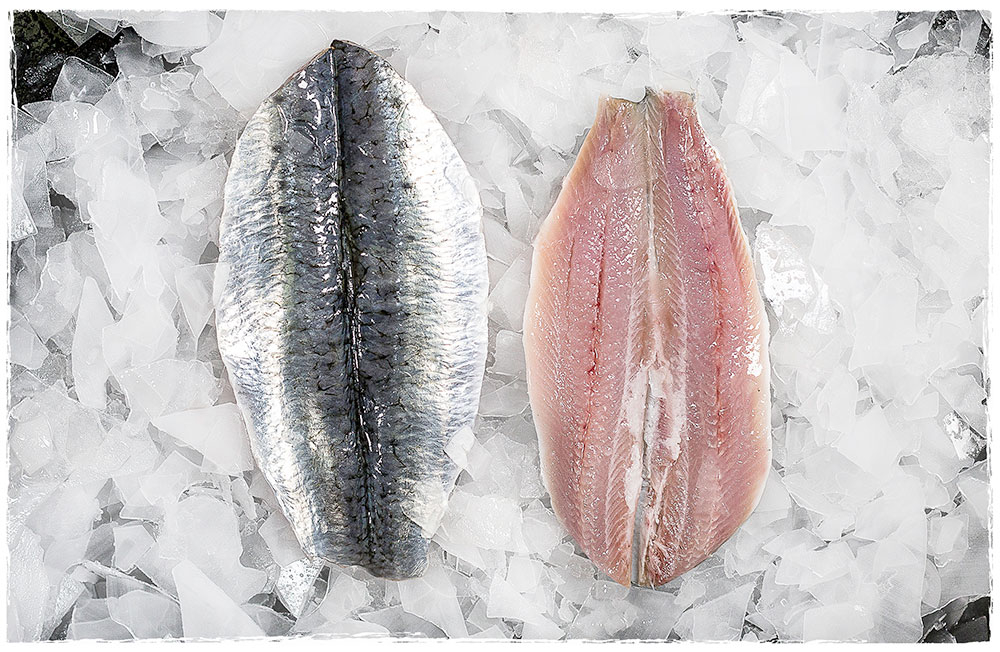
Scallops
Description: Scallops are a cosmopolitan species of bivalves, found in all of the world’s oceans. Many species are capable of rapidly swimming short distances and even of migrating some distance across the ocean floor.
Scallops have a well-developed nervous system, and unlike most other bivalves they have numerous simple eyes situated around the edge of their mantles.
Habitat: As adults, a small minority of scallop species live ‘cemented’ to rocks. Others are attached by means of a secretion called a byssal thread. The majority of species, however, live recumbent on sandy substrates.
When they sense the presence of a predator such as a starfish, they are able to escape by swimming swiftly through the water using a form of jet propulsion created by repeatedly clapping their shells together.
About the name: The Scallop is a common name used for any one of numerous species of saltwater clams or marine bivalve mollusks in the taxonomic family Pectinidae. Pecten maximus, commonly known as the “great scallop” or “king scallop”.
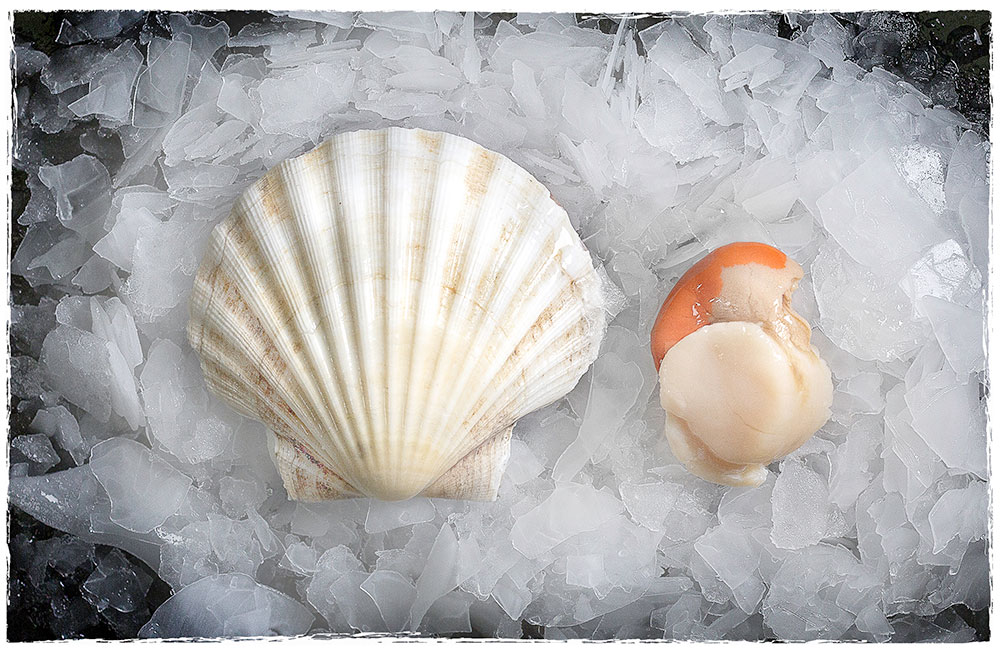
Seabass (wild and farmed)
Description: Scientific name is Dicentrarchus labrax and is a very popular farmed species of fish in the Mediterranean waters. The wild caught Bass can reach a size up to 4ft and 20lb.
Habitat: Found throughout the UK in the warm summer months, it is more common on the south coasts of England and Ireland. Bass are found throughout European waters and throughout the North Sea extending along the coastline of France, Spain and Portugal and along parts of the north coast of Africa. They are also present throughout the whole of the Mediterranean and the Black Sea.
Bass is mostly farmed in Greece, Turkey, Spain and Croatia.
Feed: It primarily hunts small fish but will also take worms and crustaceans.
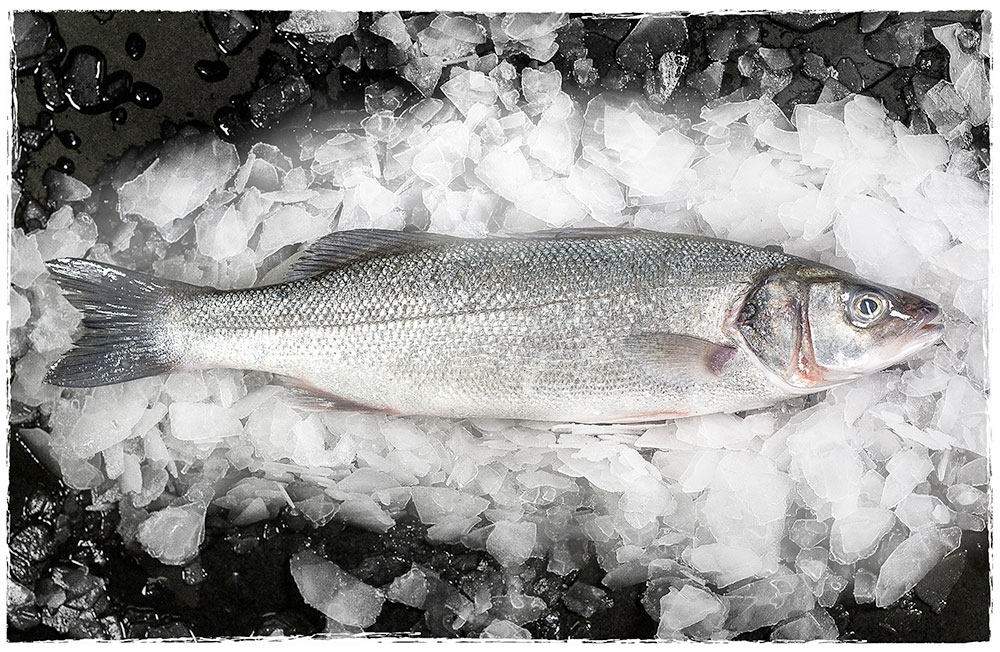
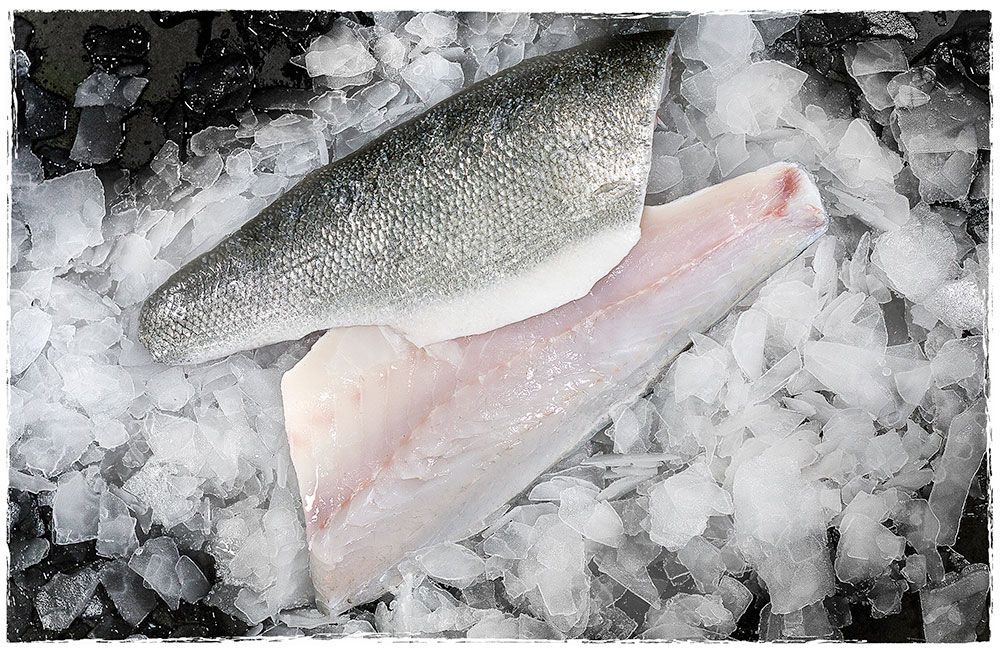
Seabream
(Spondyliosoma cantharus) or the Black Bream
Description: There are over one hundred species of sea bream across the world, most species being hermaphrodites – all born as females but certain fish will turn into males when they reach sexual maturity to allow reproduction to take place, growing in size up to 10 ins /23cm and 6lb/8oz.
Habitat: Bream is a warm water fish primarily found around the south of the British Isles, although isolated populations are located further north The black bream was once a rare fish around Britain, but rising sea temperatures have seen numbers rise. Bream is mostly farmed in the Mediterranean waters.
Feed: Bream are also unusual in the sense that they are omnivores: they feed primarily on smaller animals such as fish and crustaceans, but will also feed on seaweed and other forms of marine vegetation.

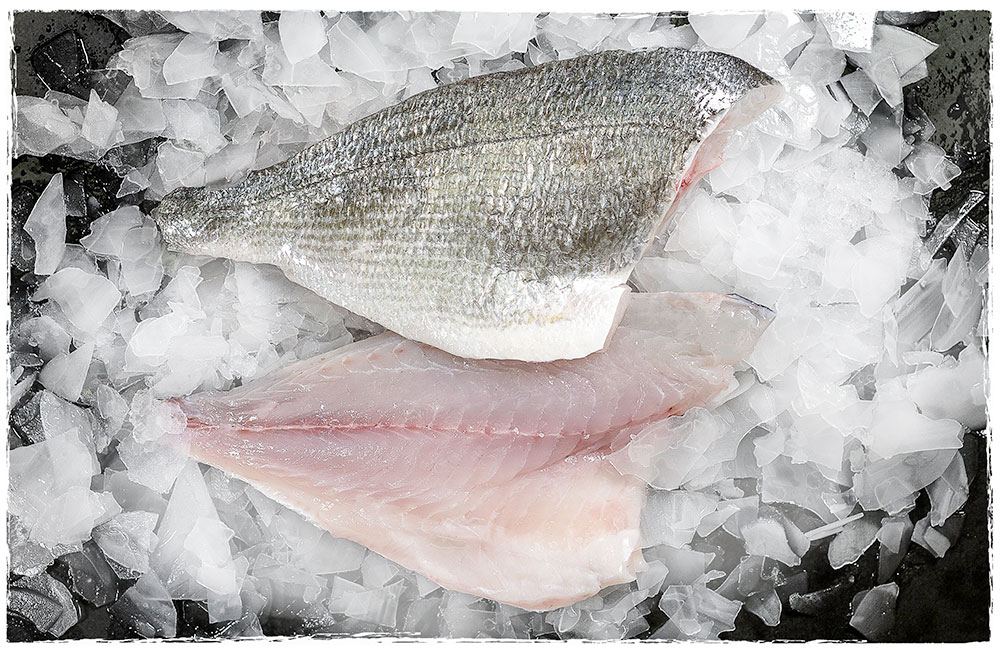
Skate
A cartilaginous fish belonging to the family Rajidae in the superorder Batoidea of rays. The majority of batoid fishes are bottom dwellers, preying on other animals on or near the seafloor.
Description: The skeleton is composed of cartilage, true bone only found in the roots of teeth. Having a limited size, the scales covering the skin do not grow throughout life as they do in bony fish.
Habitat: Skates (Rajidae) lie on the bottom, often partially buried, and rise in pursuit of prey such as herring. Skates trap their victims by swimming over and then settling upon them, a practice facilitated by their habit of hunting at night.
Feed: On invertebrates, principally mollusks and crustaceans, other fish.
Whip-tailed rays (Dasyatidae) use their broad pectoral fins to dig shellfish from sand or mud.
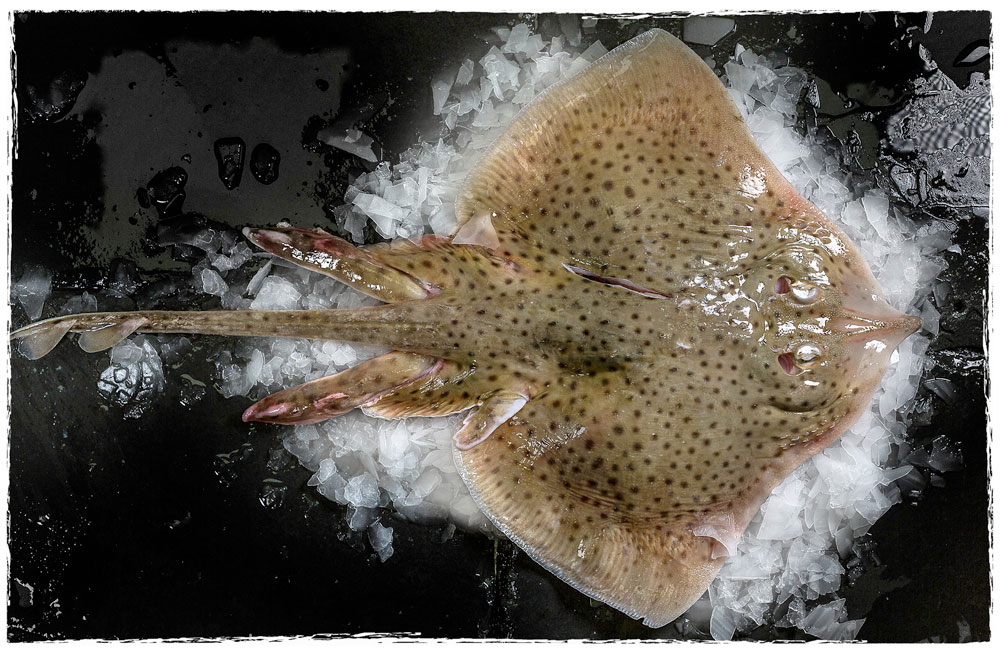
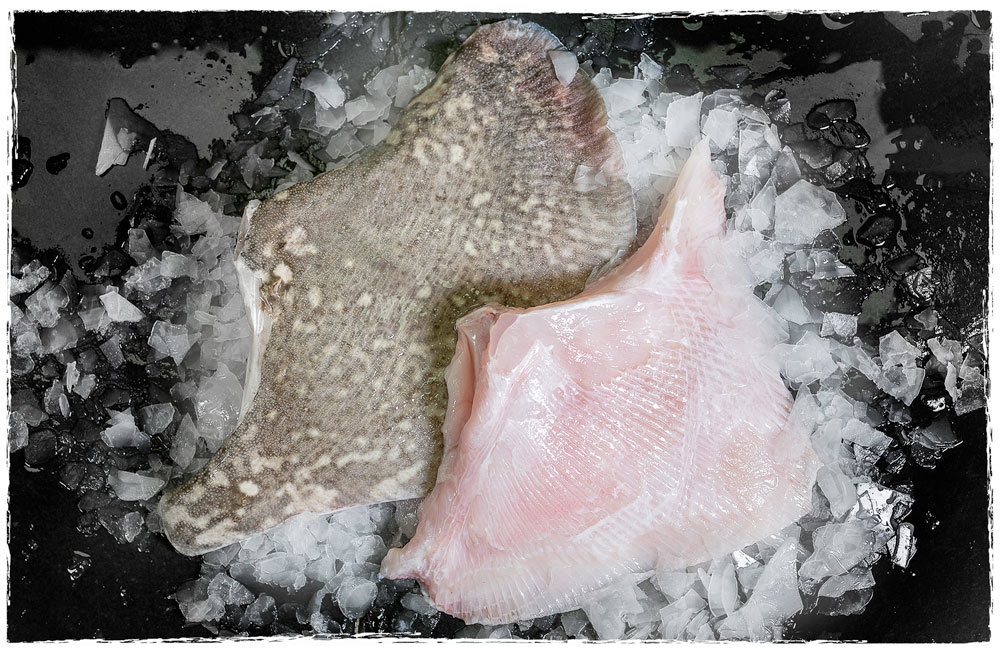
Sprats
Sprattus in the family Clupeidae
Description: Small pelagic, highly active, oily fish which preyed on by larger predators for food (forage fish). They look like baby sardines.
Habitat: Travel in large schools with other fish and swim continuously throughout the day. Sprattus sprattus is the European species of sprats, with a common length of 12 cm and maximum life span of six years. Largely influenced by environmental factors, the cold temperatures, especially in the Baltic Sea, have been known to affect the development of sprat eggs and larvae. They are also recognized for their nutritional value as they contain high levels of polyunsaturated fats, considered beneficial to the human diet. They are known for their smooth flavour.
Feed: Strict zooplanktivores, highly selective in their diet in accordance to changes in the environment as temperature and other such factors affect the availability of their food.

Squid
Squid is a popular food in many parts of the world.
Description: Squid are cephalopods of the order Teuthida, which comprises around 304 species. Like all other cephalopods, squid have a distinct head, bilateral symmetry, a mantle, and arms. Squid, like cuttlefish, have eight arms arranged in pairs and two, usually longer, tentacles. Squid are strong swimmers and certain species can “fly” for short distances out of the water. The skin is covered in chromatophores enabling the squid to change color to suit its surroundings and making it invisible. The underside is also almost always lighter than the topside, to provide camouflage from both prey and predator. With a complex digestive systems, solid waste is passed out of the rectum. Beside the rectum is the ink sac, which allows a squid to rapidly discharge black ink into the mantle cavity. Squid have three hearts. The majority are no more than 60 cm (24 in) long, although the giant squid may reach 13 m (43 ft). Squid are Carnivores and most commonly eat fish, crustaceans and other squids.
Habitat: Mainly salt water species found in the major oceans, there are also plenty of freshwater locations where they survive. All of the species of giant squid though are to be found in saltwater oceans only. They are also found very near the bottom of the ocean floor where they can be undetected most of the time. Squid are highly adaptable so they are able to move to where they are able to thrive following their food sources. They are able to move if their natural habitat is destroyed and it is believed this is why squid have been able to survive on Earth for millions of years. They are found in the Norther and Southern Oceans although the North Atlantic is home to many more species than other habitat locations.
About the name: Calamari is a culinary name for squid, especially for dishes from the Mediterranean, notably fried squid.

Tuna
Ocean Fish supply: Yellowfin Tuna – Tumnus albacares
Description: There are eight species of true tuna and a number of other related tuna-like species. Typically, the species are divided into Bluefin and Yellowfin tuna and other types of tuna like species. There is a great deal of difference in the sizes between species: the largest is the Atlantic Bluefin tuna which can be 14-15ft in length, weigh 1500lb. They have powerful, streamlined bodies and slim, stiff fins which make them adaptable to swim at great speeds. Yellowfin tuna is the fastest of tuna species and is thought to be able to reach speeds of up to 50mph.
Habitat: Tuna are a shoaling fish which can live in vast groups and most tuna species have been observed showing signs of distress if they become separated from their shoal. Tuna species are found throughout the world’s oceans. Yellowfin tuna is found mainly in the tropics and the temperate waters of the Mediterranean.
Feed: Tuna are predators and feed on other shoals of small forage fish.
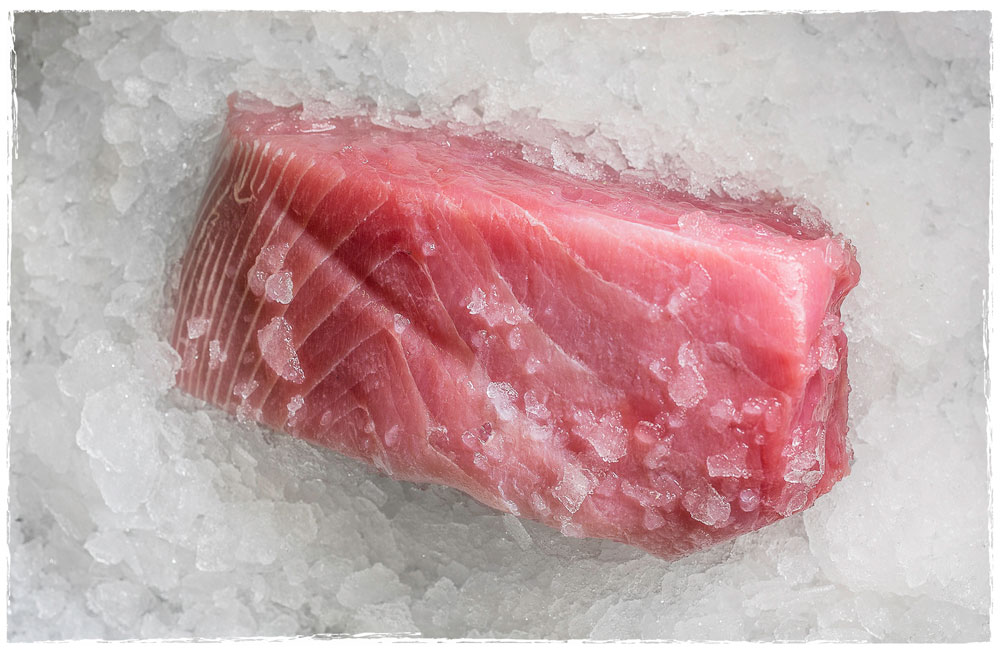
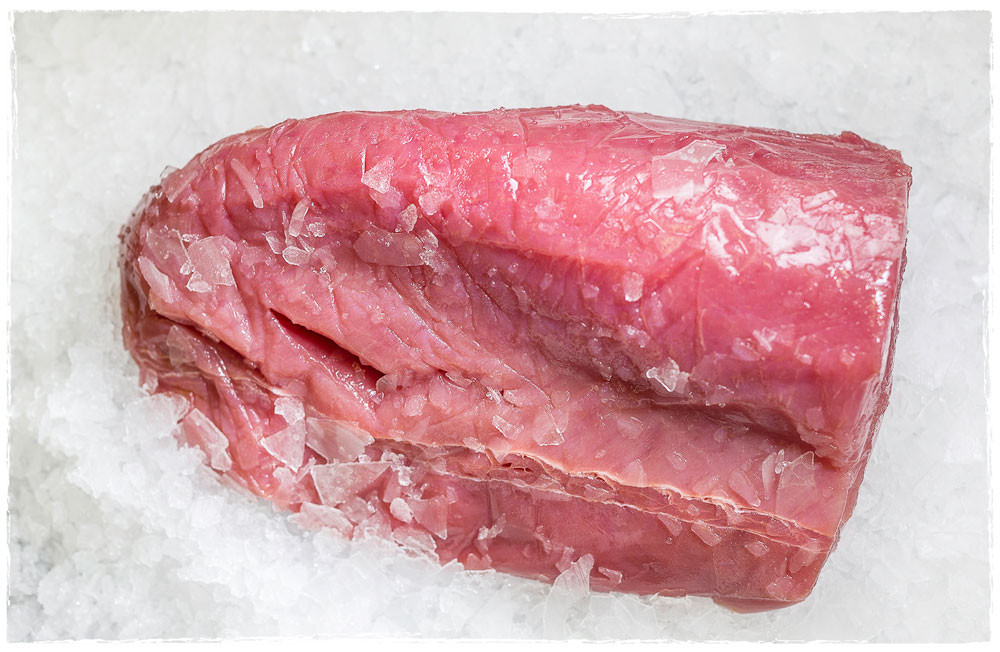
Turbot
Psetta maxima
Description: The European turbot is a large left-eyed flatfish, with an asymmetrical disk-shaped body. It has been known to grow up to 100 cm (39 in) long and 25 kg (55 lb) in weight. The turbot is also commonly known in a certain part of Greystones, Dublin as the King’s fish.
Habitat: found primarily close to shore in sandy shallow waters throughout the Mediterranean, the Baltic Sea, the Black Sea and the North Atlantic.
Feed: A carnivorous species requiring a high percentage of fishmeal and fish-oil in diet.
Farming of turbot: Turbot are farmed in enclosed land-based flow-through systems that have little or no direct environmental impact. It is a valuable commercial species being farmed in Bulgaria, France, Spain, Portugal, Romania, Turkey, Chile, Norway, and China. Turbot is highly prized as a food fish for its delicate flavour.
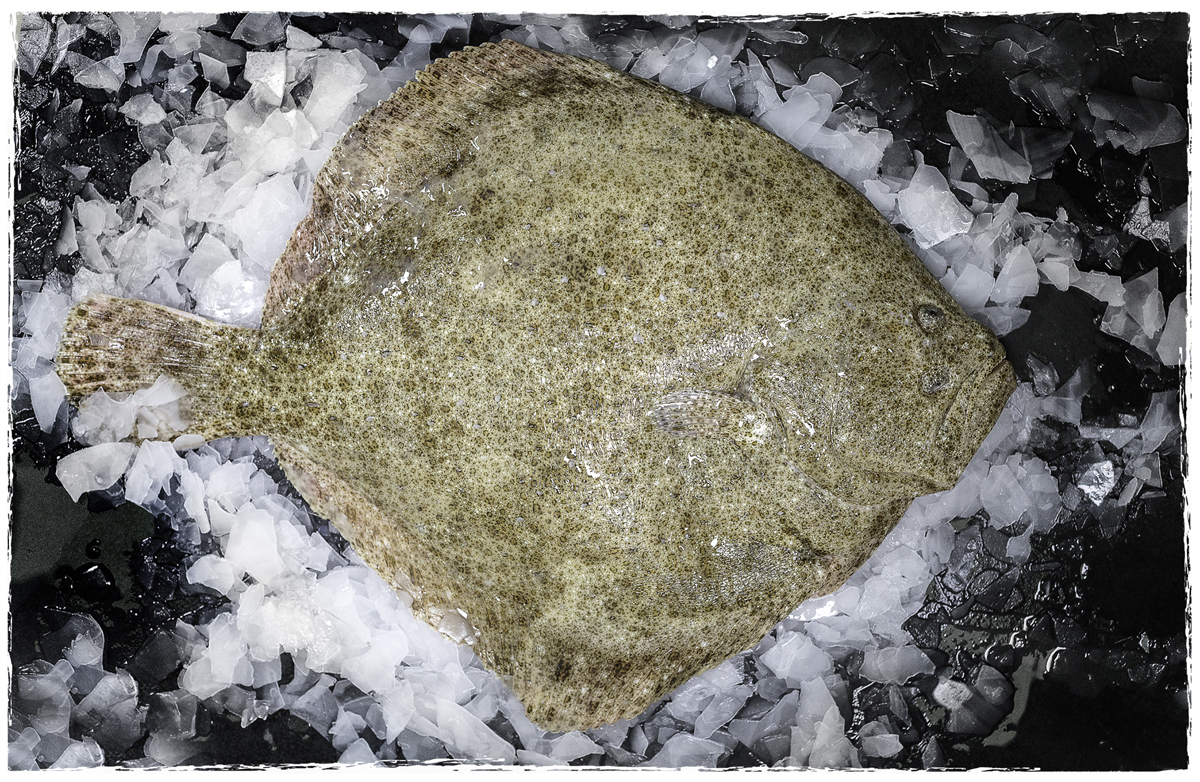
Whiting
Whiting is a Gadiforme (cod-like) fish, species Merlangius merlangus, in the family Gadidae.
Description: The whiting is a small fish, can be brownish, grey or greenish in colour on it’s back. Eyes are relatively large and like all members of the cod family the whiting has three dorsal fins. The upper jaw protrudes slightly.
Habitat: This species inhabits the eastern Atlantic Ocean and the Mediterranean Sea, as well as the North Sea on the East Coast of Britain. Very common around much of the UK, most common in the autumn and winter. Bigger whiting of 1-2lb become more common closer to Christmas. By late March the whiting begin to move out to sea to spawn, smaller whiting may stay in coastal waters all year round, with areas such as North East England and parts of Scotland.
Feed: Worms, crustaceans, shellfish, other small fish. Fresh from spawning these early fish are often skinny and very hungry, but they soon fatten up after feeding in coastal waters. The whiting feed on anything they can find by scavenging around on the seabed.
About the name: In the USA, it is commonly known as the English whiting.
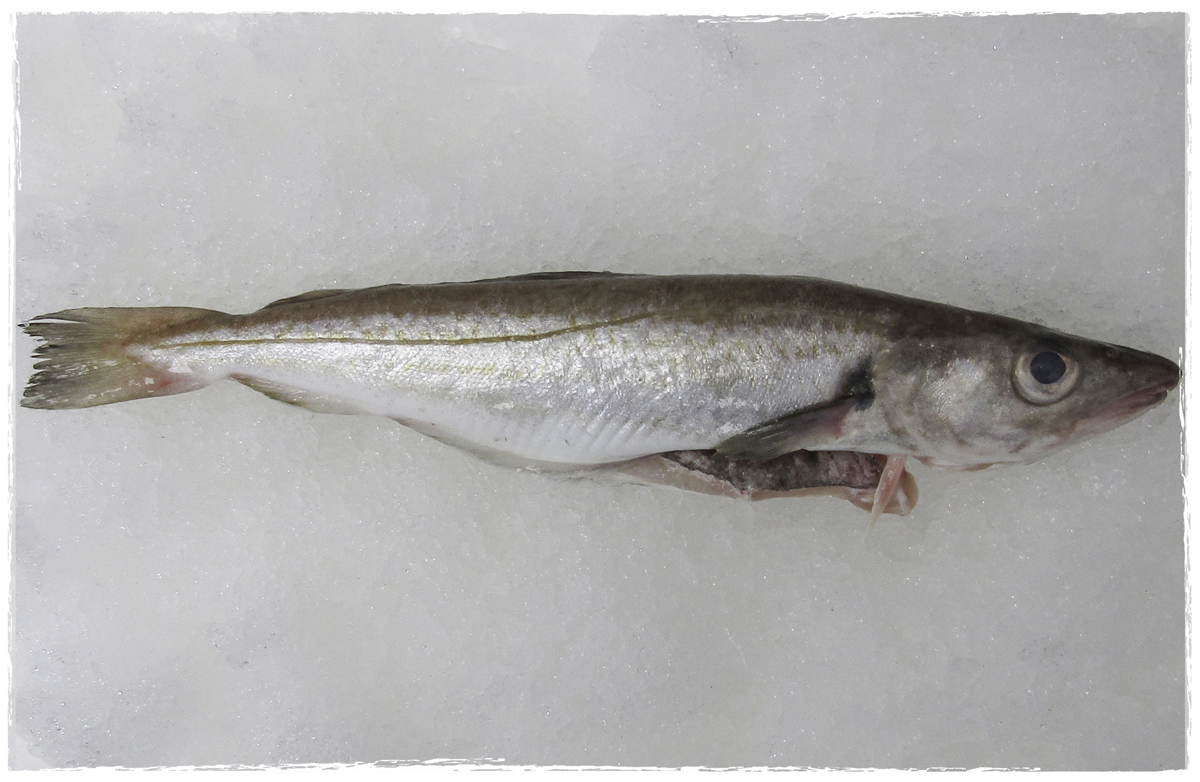
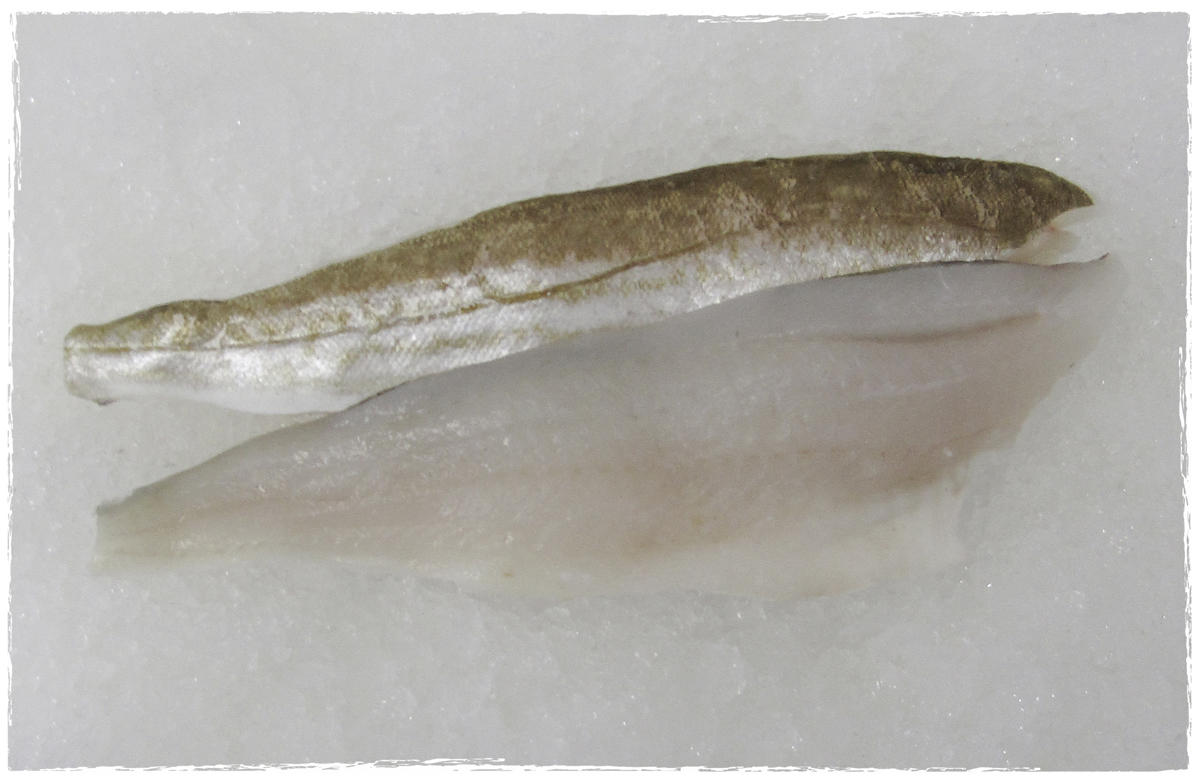
Accreditations



